|
Rance's Gypsy King Fly Tying Recipe: Hook: #10 Daiichi 1280 Thread: Black Veevus 6/0 Rib: Small Copper Wire Body: Peacock Herl Body2: Brown 2MM Thin Foam+ Flash: Pearl Krystal Flash Wing: Deer or Elk Hair Hackle: Grizzly Rooster Saddle or Cape Legs: Brown Medium Round Rubber Legs Tim Hepworth here with Fly Fishing Bow River Outfitters and Thursday Night Live fly tying. I'm here to bring you another quick tie blog and this quick tie blog is sponsored by Rock Mountain Fly Shop. remember every order over $99 from them gets you free shipping. www.rockymountainflyshop.net . I'm going to be tying tonight out of our season five kits and episode two. we are tying rancey's Gypsy King. open up your kit if you're tying out of our pre packaged material kist, but if you're not it's okay just head over to our website you're going to get a full material list (www.flyfishingbowriver.com/tnls5) and you can go to Rock Mountain fly shop or your local Fly Shop grab the materials that you need, or maybe already have them. let's go ahead, let's get our hook in our norVise. What we're tying on tonight is a size 10 number 1280 daiichi hook. so go ahead get that secured in your Vice. make sure it's not going anywhere. for a thread tonight I'm going to be tying with black, you could either use 6/0 or here I'm using some UTC 140, something a little thicker because we're going to be working with some foam and we don't want to cut through the foam too easily. let's go ahead and let's start our thread somewhere just behind the eye we'll go ahead and we'll trim out the tag end of that thread and now we're going to work this back down into the hook Bend. laying a nice little thread base in okay we'll come back just slightly. The first thing we're going to do is we're going to go ahead and tie in some brass colored small wire. I'll just tie that in and we're going to bring that thread back right to the edge of the hook bend and you can leave that wire just off the back. The next thing we're going to do is we're going to get right up building this body. Now in your kit you've got an abundance of peacock hurl. That's what we're using and there's a reason there's abundance there. You need a really good size Clump probably 10 - 12 pieces. we're building a nice thick body on this fly and we're roping up this peacock herl. it's important that they're all matched up at the tips. I'm going to level them all off. Those tips are quite brittle anyways. I'm going to lay this right on top and take a securing wrap. It's gonna spin my thread so it hops backwards. I'm gonna pull that back and I'm going to secure those butts down. create a little bit of a bump at the back of the fly here but it's not going to be noticeable once we put all this body material down. okay so I've got that secured in right to the bend. I'm going to work my thread back forward. I'm going to leave it right behind the eye. This is where we're going to bring all this material forward. I did a little half hitch there just so I could set my thread out of the way now. I'm going to get both hands here working with this peacock herl. What I want you to do is place the butts in your finger and spin them. we're going to rope up this peacock herl. it gives it a nice appearance when you get it on onto your fly, and then we're just going to start palmering this forward. use the rotary function of your Vise. if you get to a point where it hasn't totally spun together, I'm just going to spin the herl pieces up again and make sure it's spun tight. it gives it a nice velvety appearance, very buggy. I'm gonna bring it right up to the eye and I'm gonna come in and bring my thread back to a working position. hold that peacock herl straight up get a securing thread wrapping behind it and in front of it. repeat that process one more time behind it and in front of it and then we can go ahead and trim out that peacock herl. this stuff is notorious for slipping and going back so it's really important that you secure that quite well. I'm just going to go ahead with my wire and I'm going to go in that same direction as ther herl. I'm gonna do some nice segmenting wraps trying to keep them nice and evenly spaced. I'm also going to take this all the way up to just behind the eye and secure it down . I'll go ahead and trim out that wire and make sure you grab your buddies' scissors, these might be Danas. if you're looking for some good buddy scissors I think if you head on over to Rocky Mountain Fly Shop you might just have to look for something called Dana scissors and they might have some just like this for you. now what I'm going to do is I'm going to take my thread and I'm going to hop it back while I'm on top of the fly. I could wrap through this a bunch of times and you're not really going to see it but I'm just going to try to keep my wraps up on top of the peacock curl. I'm segmenting that overall hook into quarters so I figure I'm about a quarter of the way back from the eye that's going to take a couple thread wraps. I'm going to leave my thread there. the first thing we're going to do is we're going to get some foam involved here. We got some foam for this fly. This is just 2mm Brown foam. you want to measure it so that it's about a hook Gap and width. I want to have this hanging basically just off the back a little ways and then out to the front here a little ways. I just gauge it roughly. I'm not doing anything specific right now but at the back end of The Fly I'm going to cut just a little Point into it. so I'm going to flip it over and cut it again. That's what I want the back of the foam to look like. Now I'm going to lay this on top of the hook and I want that pointy end there you see to extend just beyond the bend. I'm going to take one wrap here. this one's a loose one . put a little tension on it. The next one is a little tighter. The third one is completely tight. if we do it in that sequence we shouldn't cut the foam with our thread. lift that foam up and take a couple wraps in front of it, that's going to help it from spinning around the hook shank itself. get that nice and secure. we're just going to kind of leave it as is. The next thing I'm going to do is I'm going to go in and grab some Crystal Flash. you're also going to notice you have quite a bit of that so if I grab let's say four or five strands, they're long strands. I'm just going to take them. I'm going to fold them over and I'm going to cut right where they're folded so this is going to give me probably double. if I had four strands now I got eight and that's gonna be plenty for this. It's gonna still be quite long. I like them long on the fly because I'm going to be able to keep them out of the way. if you cut them short right away they actually just really want to get in the way so I'm going to tie them in like that, fold that over, put a few thread wraps down to secure them, and I'm just going to pull them back out of the way like so. if you have a material clip or something it's great to just hold that stuff back. I'm going to grab my rubber legs. so a little different than normal we're going to tie two in on each side at the same time. I've got these still attached to each other, I'm just going to leave them like that. they're too long for this specifically right now but we'll trim them in a second. I'm just going to take a couple thread wraps kind of loosely, let the weight of the bobbin hang down and I can still go in there. I can adjust these. I can move them around to where I want them. if you can accomplish it , you'd like that front leg to be pointed down slightly like so. Now I'm gonna stick in the rubber legs on the near side of the fly to myself, same exact thing as I did on the far side. take a couple wraps just to get them kind of laying in there and then I can go ahead and I can adjust them a bit. okay just kind of put them right in the middle so you have a good adjustment on both sides. make sure those are just up against the edge of that foam. Next we got some deer hair. you also could use elk hair. we're going to take a decent sized Clump maybe half a pencil width, nothing too crazy. this isn't a very big fly so we're going to grab a little clump of it. I'm going to trim it off right off the patch. right away I can see there's going to be a lot of fluff in the back of it so you can see all that fluff or under fur in there and I'm gonna try to get some of that out and kind of flick it out. You can use a small comb if you like. Now I'm going to go ahead and place this right in a hair Stacker. go ahead and stack that hair. get it in your hair Stacker. we're going tips down as always. give that a couple whacks on the table now when I pull this off I want the butt end of the stacker to be facing back down the fly. That's where I want the tips to be so as you can see here I pull it out, and I got the tips right there. go ahead and grab those tips keeping them together. I can do another little clean out of that under fur while I'm at this point. My tips should be nice and lined up. Now what I'm measuring here, I want my tips to extend just beyond the back of that foam as well, so I don't want them way out here. I don't want them too short. I want to be right about there. Once I've measured that I'm going to switch hands keeping my position on the hair and I'm actually going to cut this right here. make a mess of my table for you so when I tie this in I don't want to have to trim again. I want to tie this in just like so, so I'm going to tip those hair down. I'm going to take a gathering wrap on that hair, second wrap a little tighter and you're going to see it flares that hair slightly. I'm going to put some wraps through the butts of the hair. Now if that moved your legs around at all you can always just re-adjust them. they should still move for you. Now you can see at this point my Crystal Flash is going to be held down by that hair so I can come in here and trim that Crystal Flash. I'm going to trim it again just beyond that foam. make sure that foam sits up nice and tall right on top of the fly. take a couple more securing wraps. I got that hair and that Wing to flare real nice. I got my legs in place no problem there pretty much done this fly one more material to add in here so now I'm going to go ahead and I'm going to grab my Grizzly Hackle. you need a Hackle, you can either use from a cape or you can use a full length saddle Hackle, is probably preferred. it's a little bit easier to work with because they're longer a longer stem on them just going to go ahead and grab it onto my kit here and we're going to tie this so that the underside of the saddle Hackle here as you can see in Grizzly color is pointed back down the fly. Underside is going to be back down the fly. I'm going to pull just a few of these at the back out trying to attain the size that I want because I want it to be just beyond the actual size of the hook Gap. Once I've got that there to kind of prepare the stem, I'll trim it down slightly. I'll just take a trim a few of those fibers up that just gives me something to tie in with and hopefully that won't slip around on me. I'm going to come in here and tie down that stem. This is going to be something you want to make sure is good and secure so take some good thread wraps to lock it in place. I'm going to want to do probably at least four wraps of this Hackle depending on the water you're fishing it in, whether it's a little bit rougher water or calmer water you could maybe change the number of wraps. I want to go with at least four, so try to keep one wrap in front of the other. just trying to get this buggy appearance to kind of happen right here. make sure you keep that foam up on top. I want to secure this so I'm going to bring my thread in and run it along that Hackle. go to the other side. now go back in front of it just like we kind of did with the wire or anything else. you want to take some thread wraps in front, some thread wraps behind. I can go ahead and I can trim out that piece of Hackle. now I'm gonna quickly jump my thread right forward to the eye. hold that material back a bit and now I'm going to lay that foam down. we're going to create the head here. I laid the foam down. I'm going to take my thread and go right over top of that foam. try not to trap any of that Hackle that we just put in, and take a nice tight wrap down on top of that foam. take a couple more so when you look at it from the front it gives you a little bit of a bulge for the head. Now I'm going to go ahead and just trim out this foam to get the rest of it out of the way. I'm just going to extend my scissors just slightly forward a couple mils and there you go. That's the head of the fly. a pretty simple way to finish off that head. This can be a bit of a beast to whip finish because you have to hold everything back out of the way. I'm going to grab my half hitch tool. as I've showed before it's going to do a couple wraps and I stick the half inch over the eye of the hook and pull the thread down. that's going to give me a nice secure knot. same thing, pull it down one more time I can go ahead and trim out my thread and set that aside. we just have a little bit of trimming to go on these legs and we're pretty much set. make sure that that foam is right up on top of the hook itself looking super buggy. while these legs are still together. I'm going to pull them out. this is a this is a feel thing here guys. I want the front legs to be a little shorter than the back legs. I'm going to trim those there. I'm going to hold these back legs to just be on the back of the foam and trim them there now. originally this fly was actually a crane fly is what it was meant to be and now we've kind of adapted a little bit more into fishing it for stone flies. really effective in both regards but important it kind of just gauge those legs where you want them and then I'm just going to go with the last piece here. I'm just going to split all those legs so if they haven't already come apart on you just split them right to the body of The Fly. we can go in there with just a little bit of solarez resin. we want to secure those last few thread wraps that we took on the underside. dab those there I'm using some bone dry by solarez. I'm going to cure that with my UV light. that is Rance's Gypsy King. a really good pattern. definitely suggest keeping this one in your box and fishing it some more. it is Tim here with Fly Fishing Bow River Outfitters, and Thursday Night Live fly tying. this has been a quick tie blog, brought to you by Rocky Mountain Fly Shop.
Frenchie Nymph Fly Tying Recipe: |
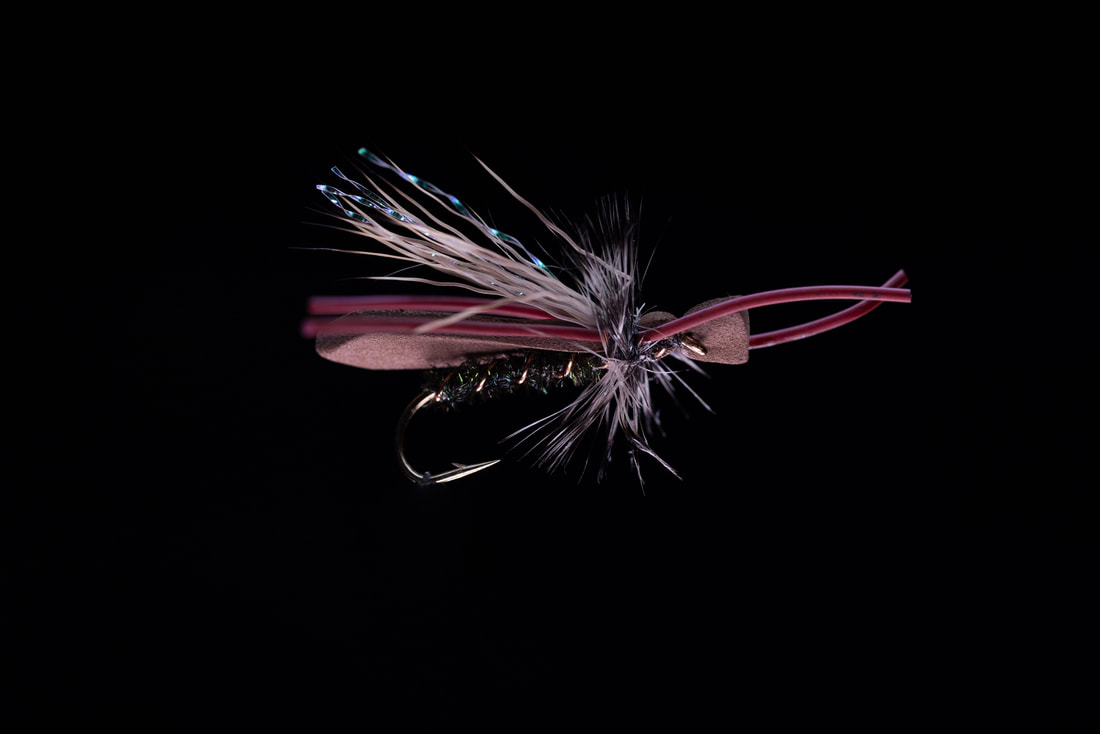
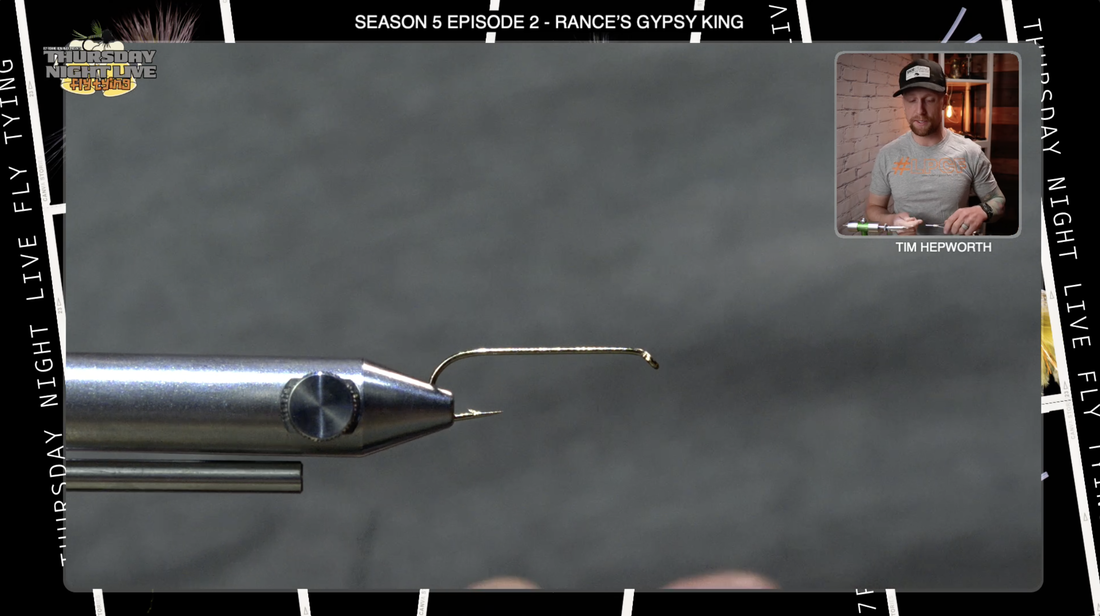
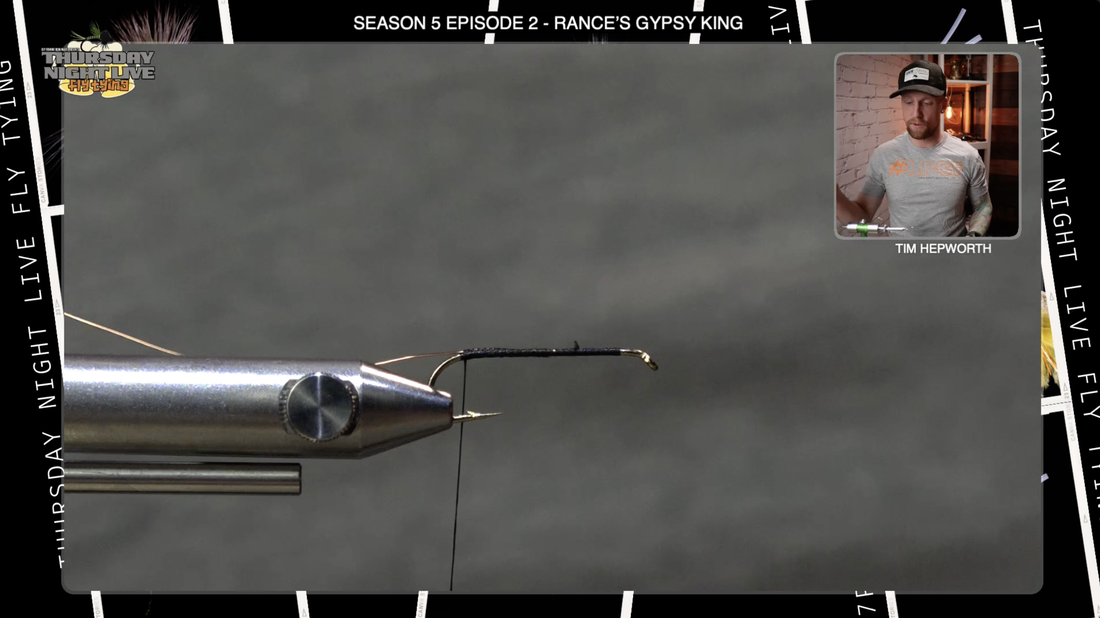
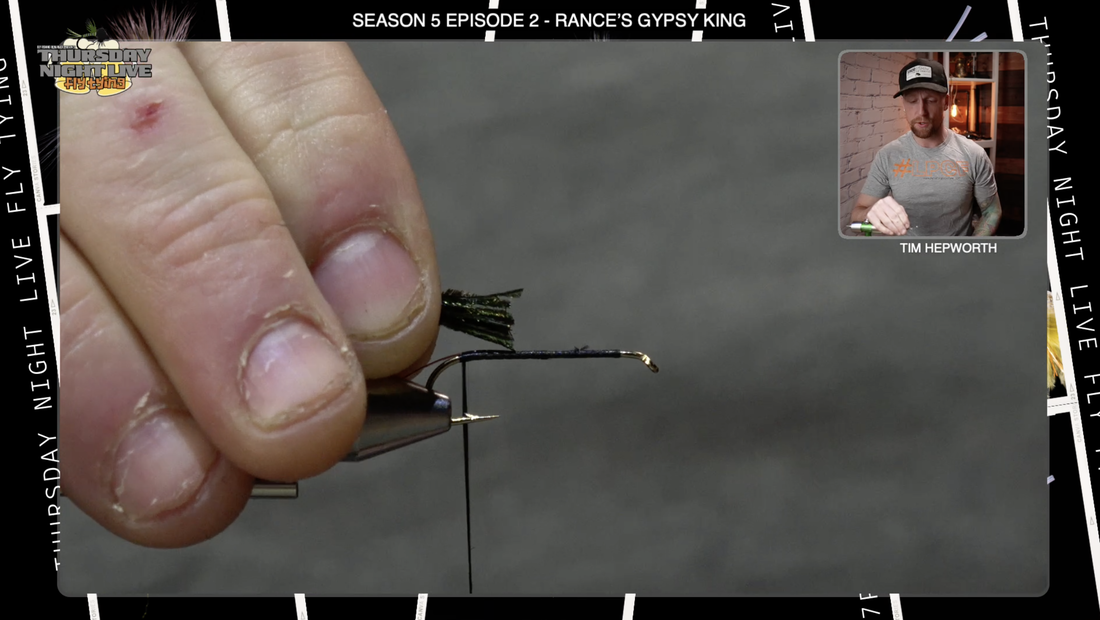
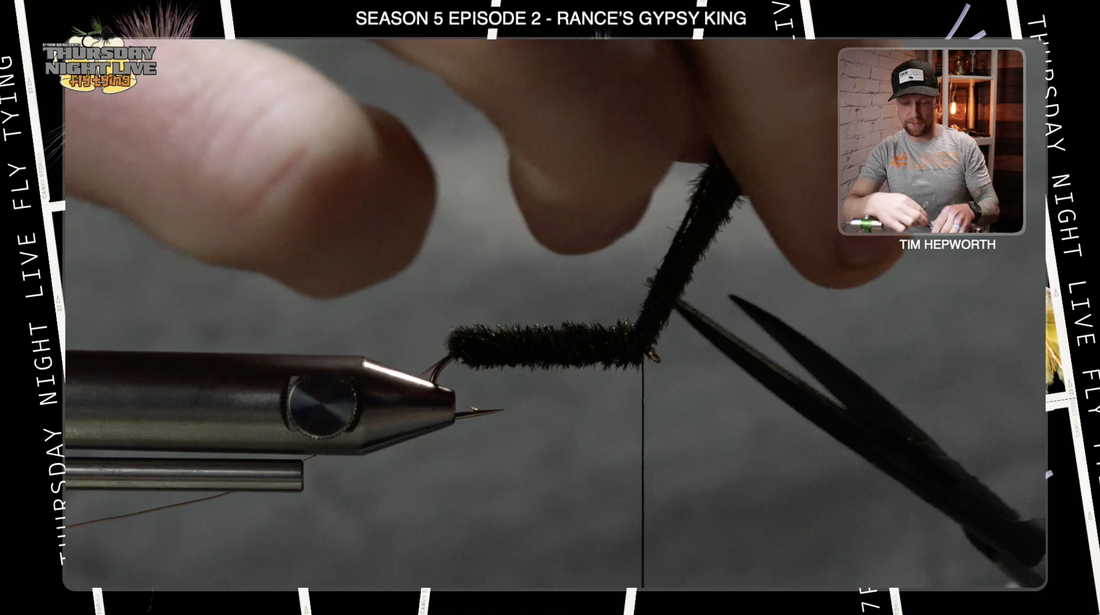
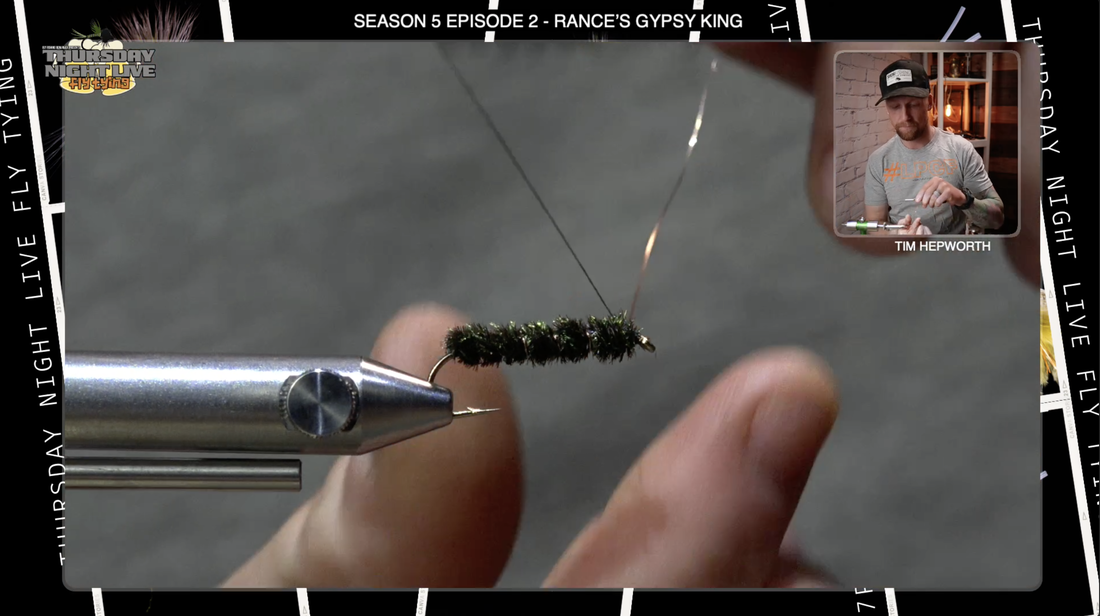
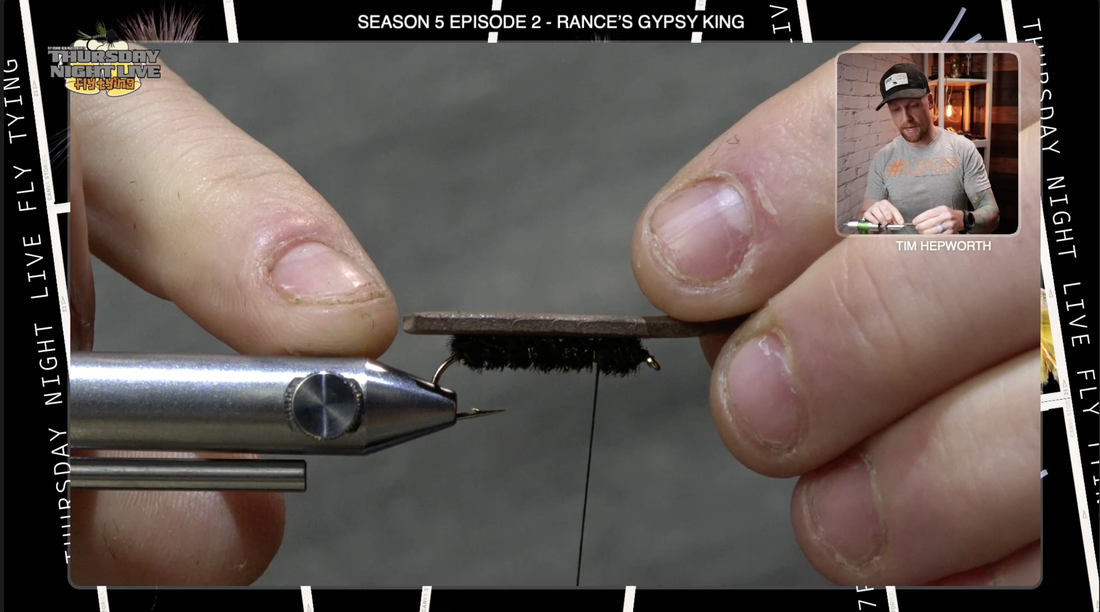
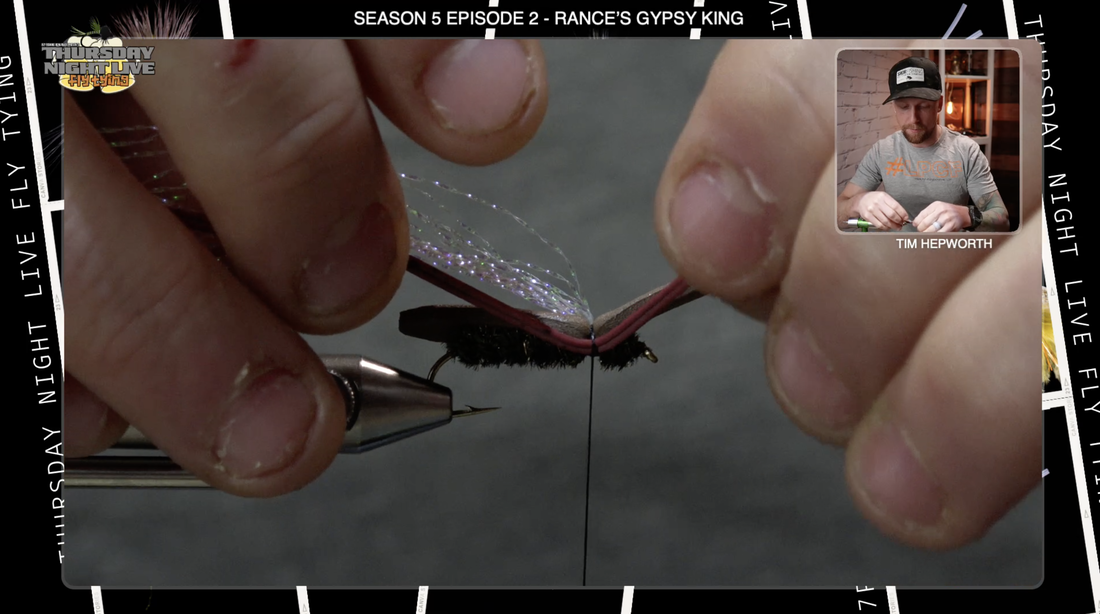
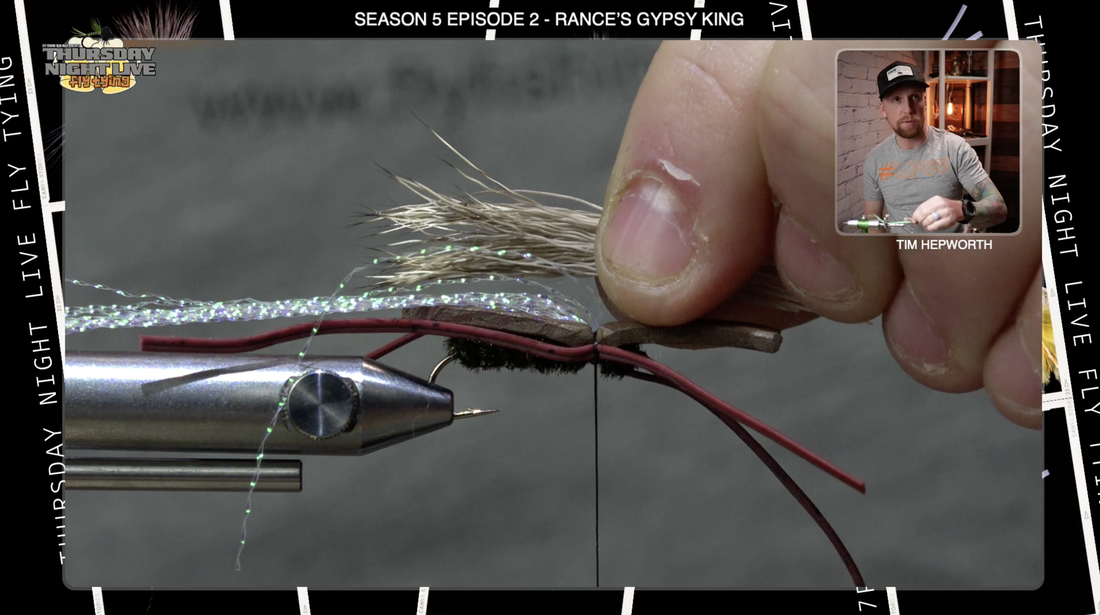
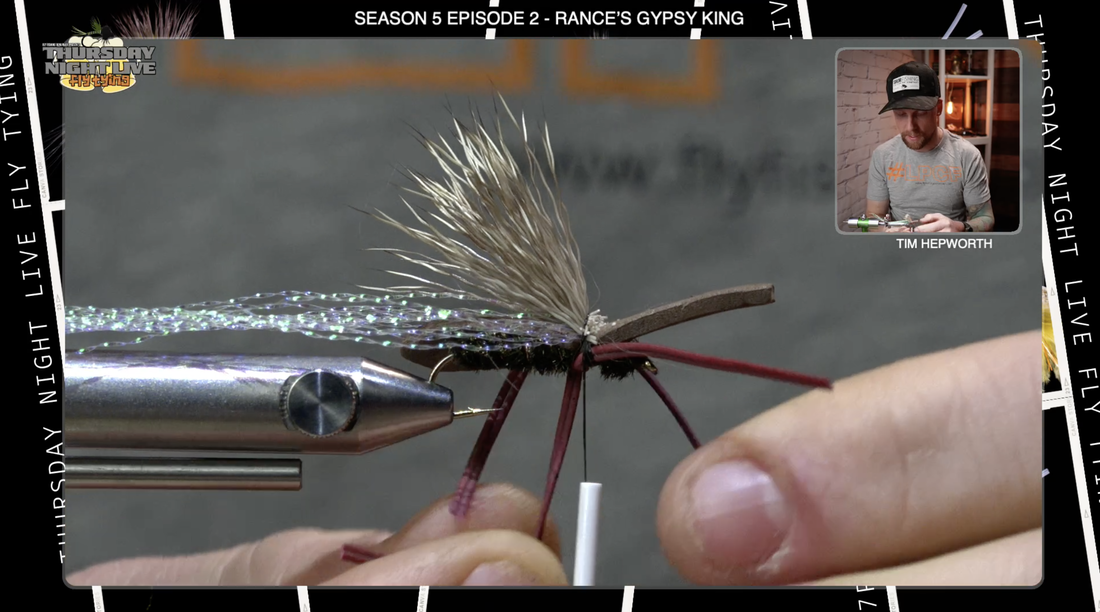
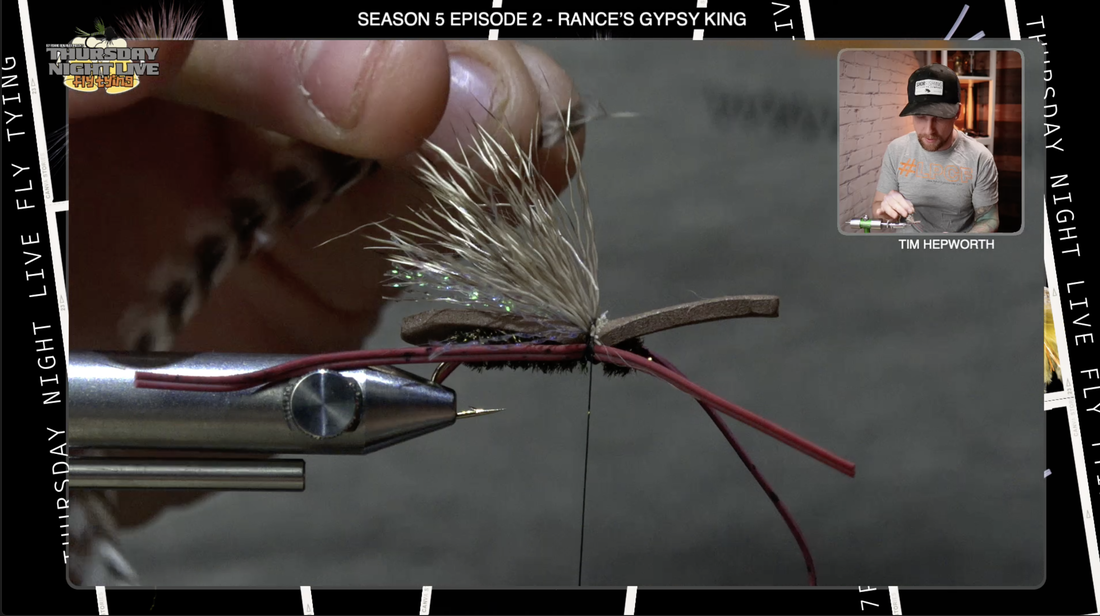
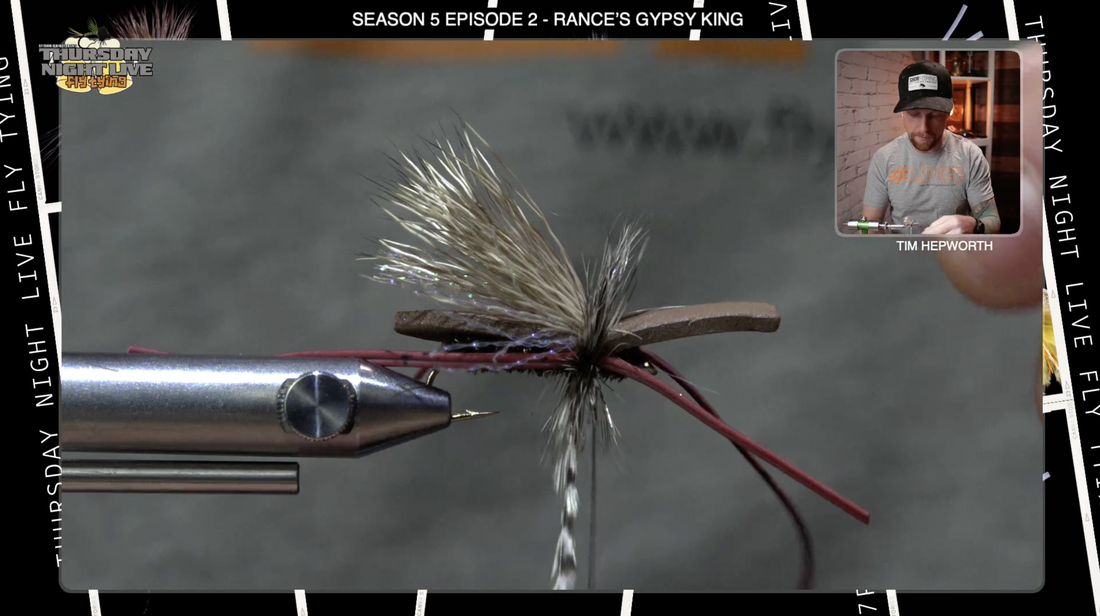
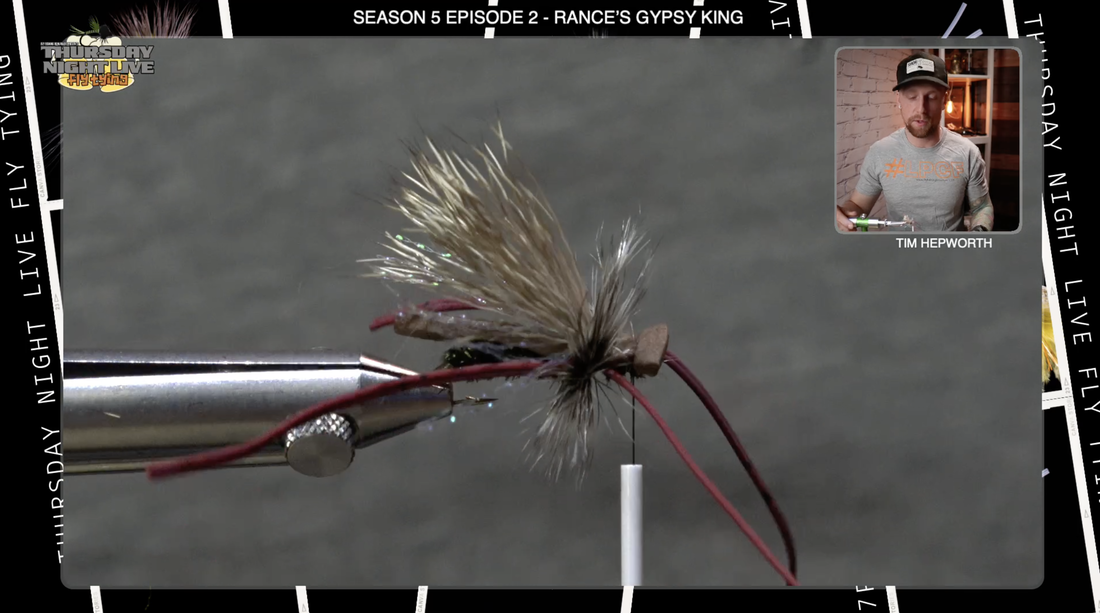
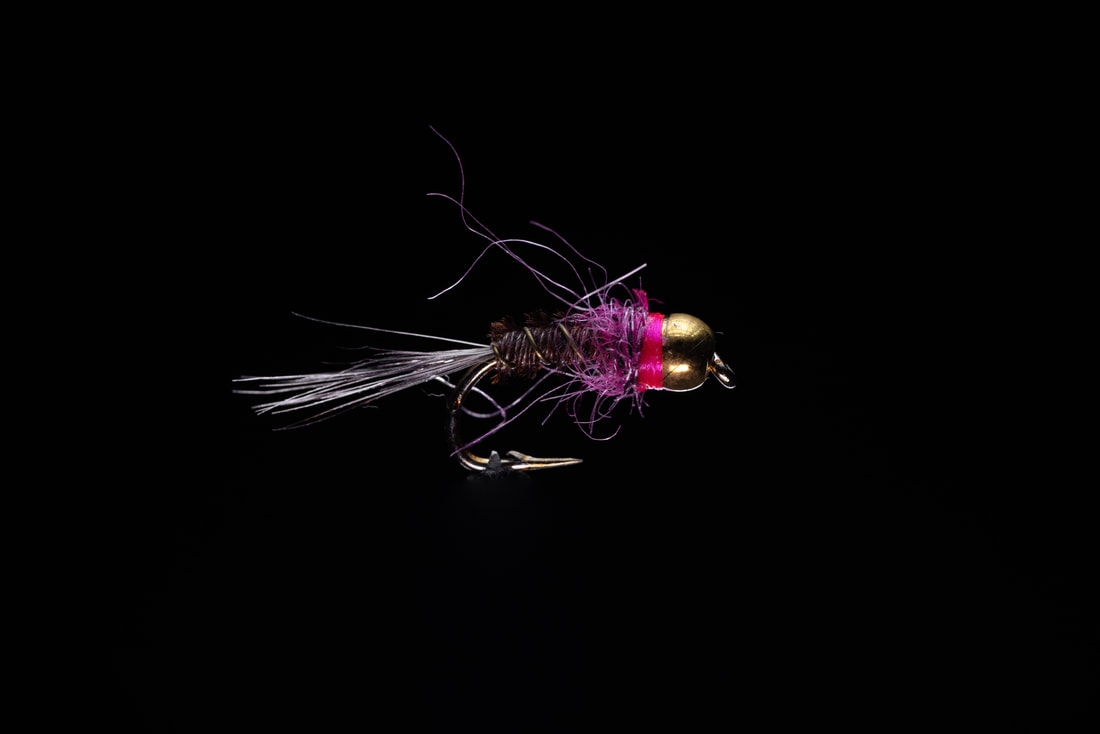
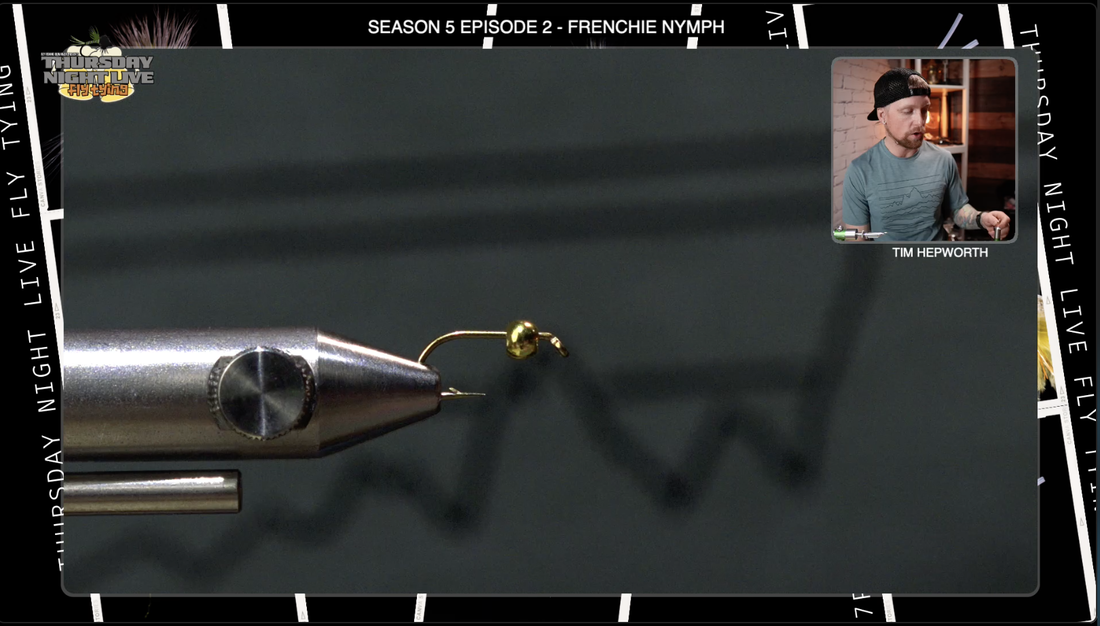
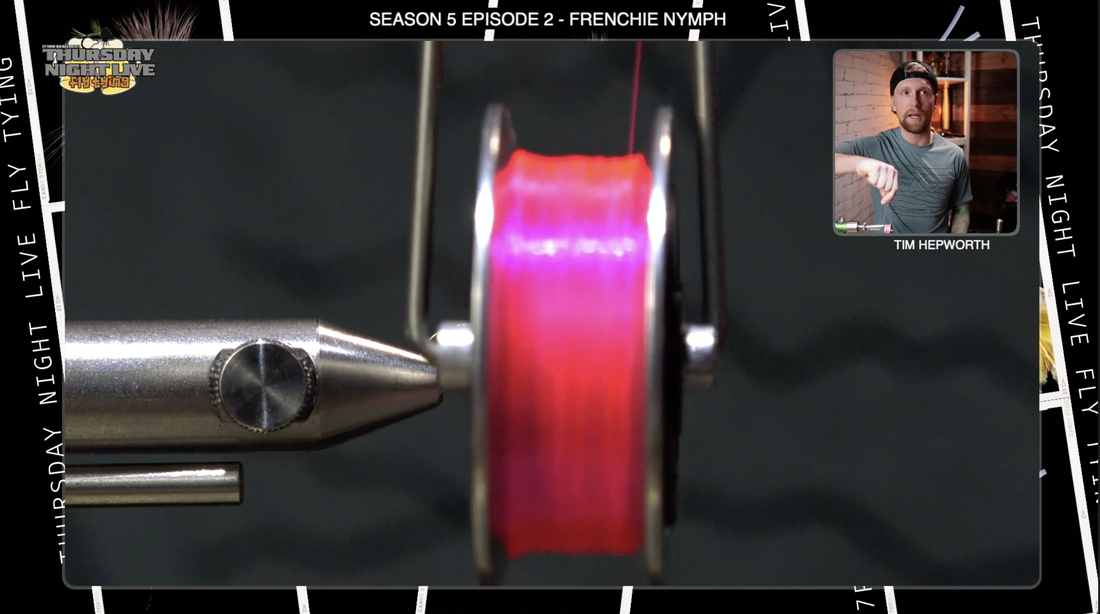
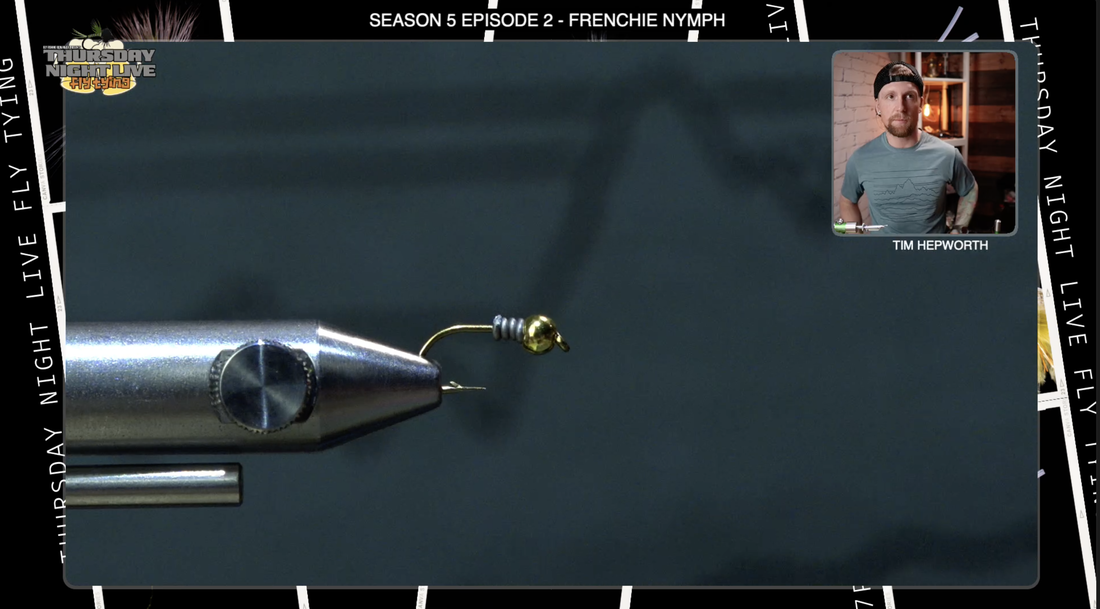
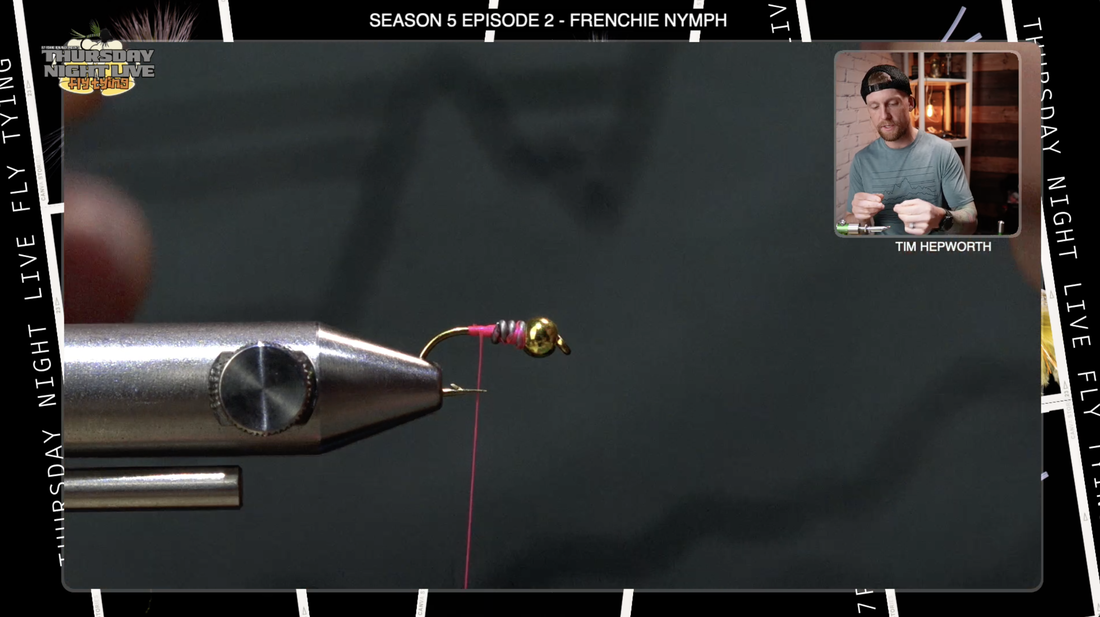
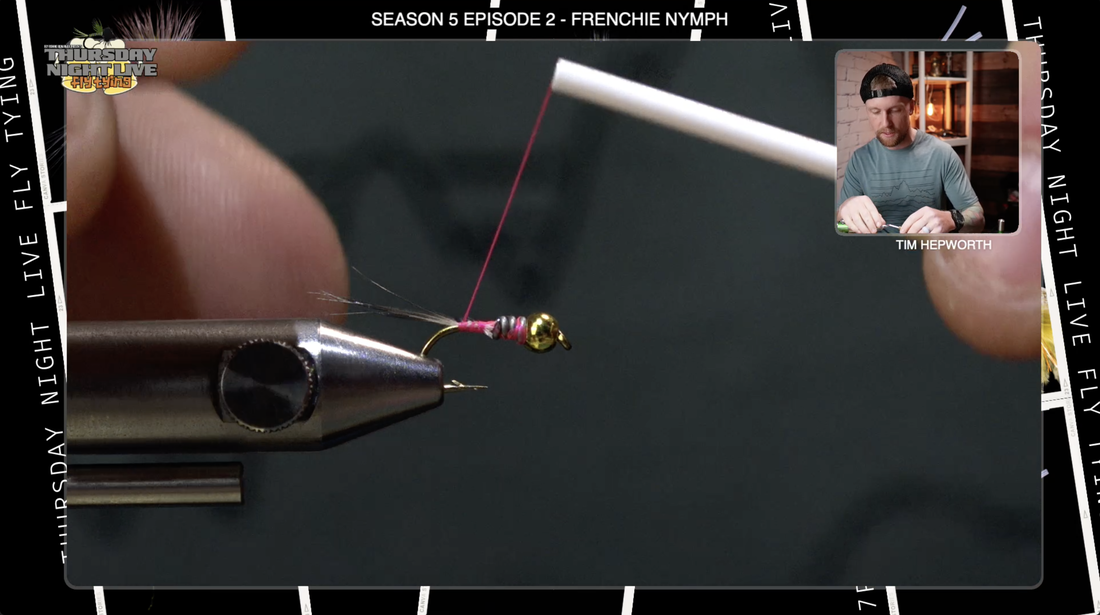
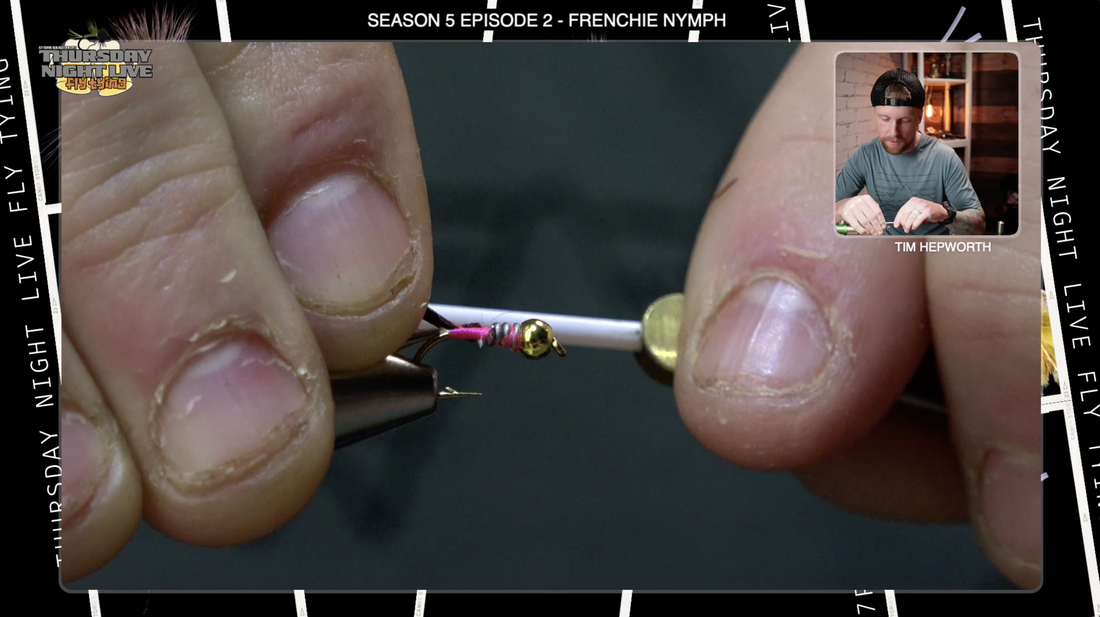
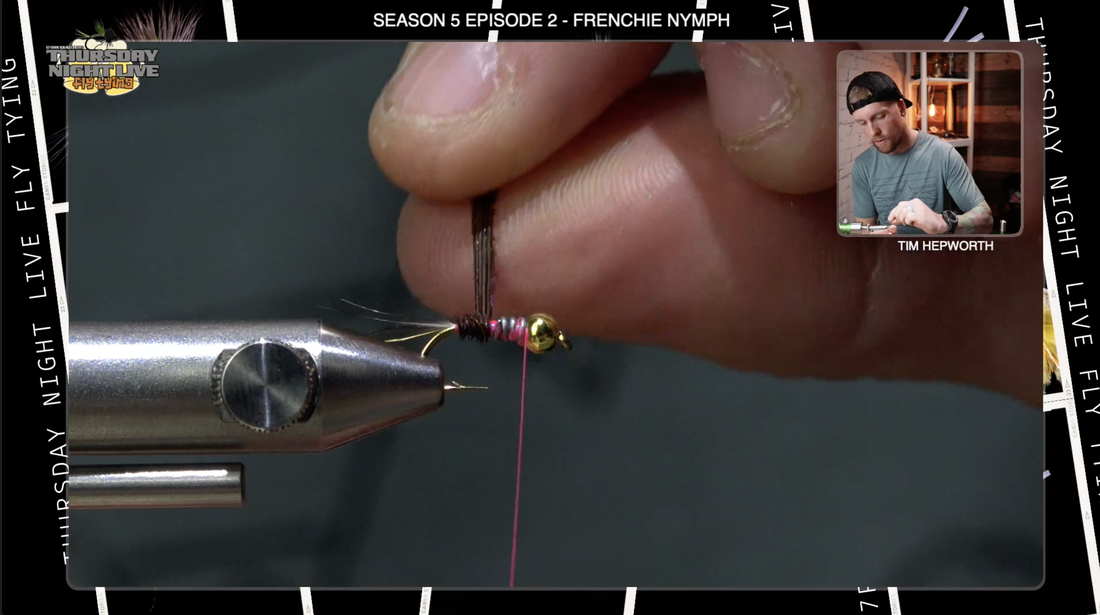
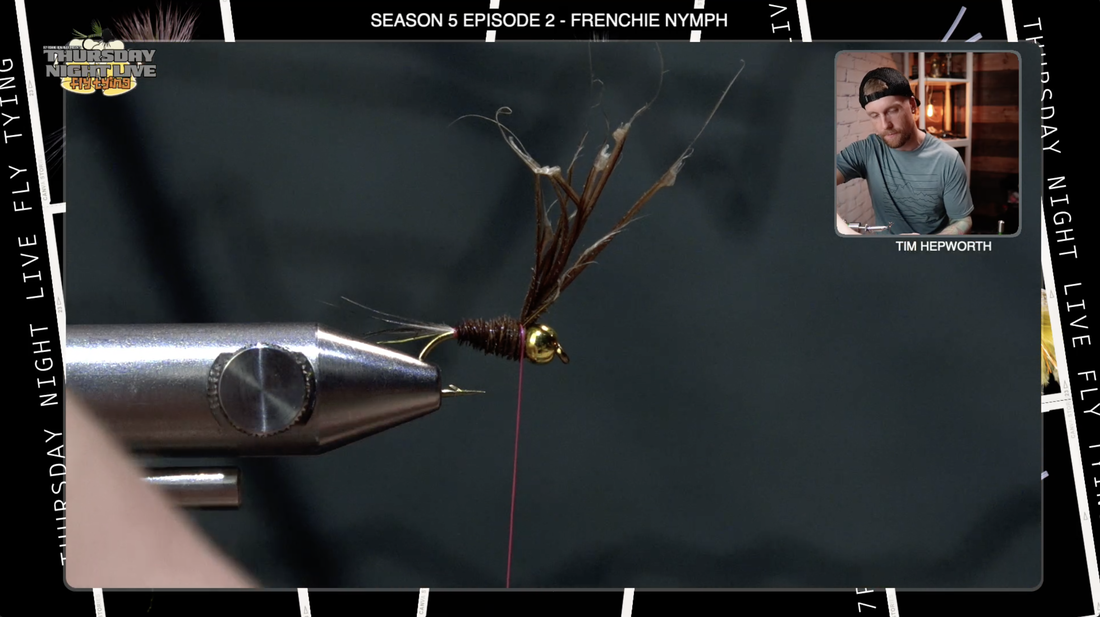
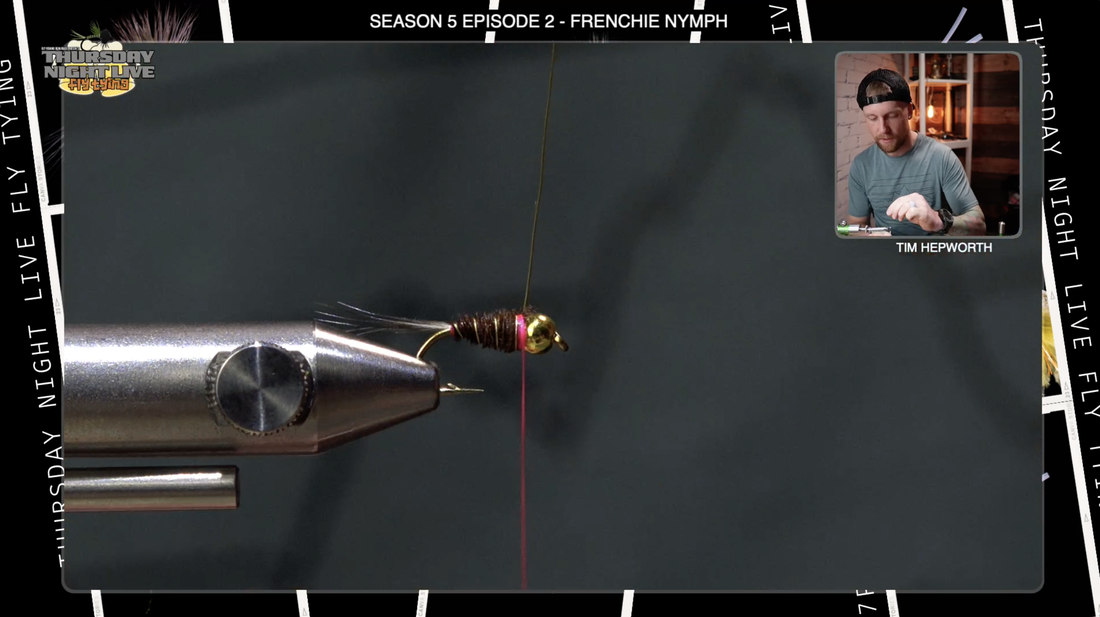
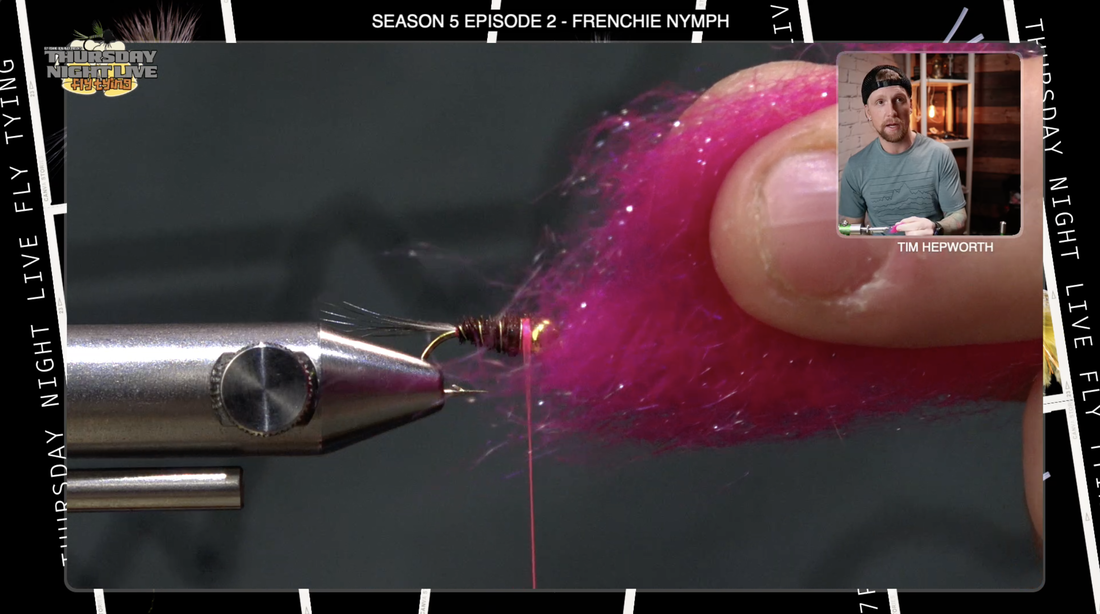
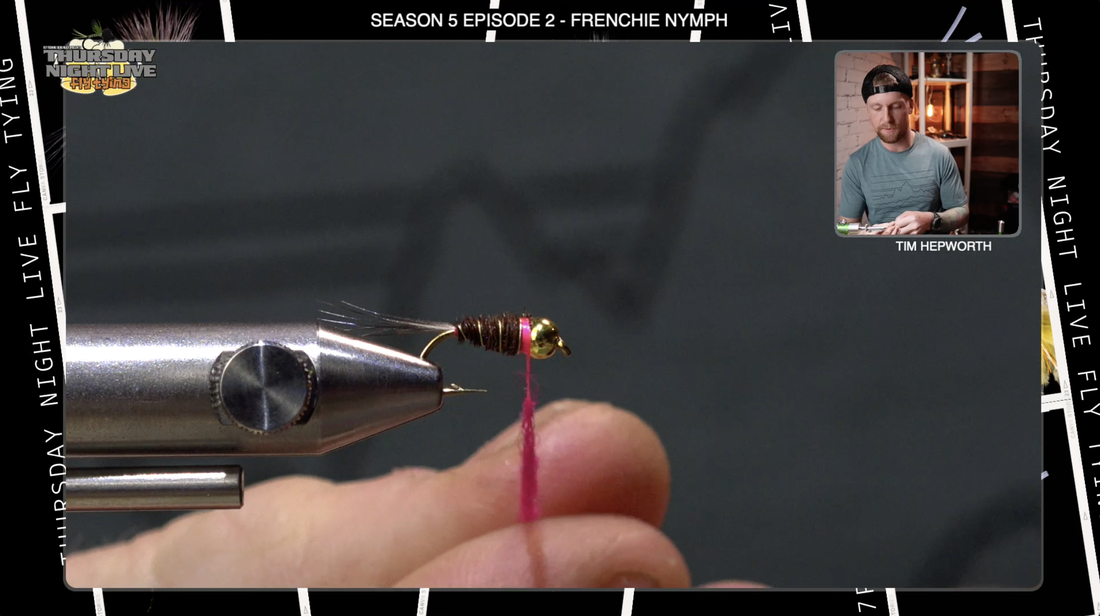
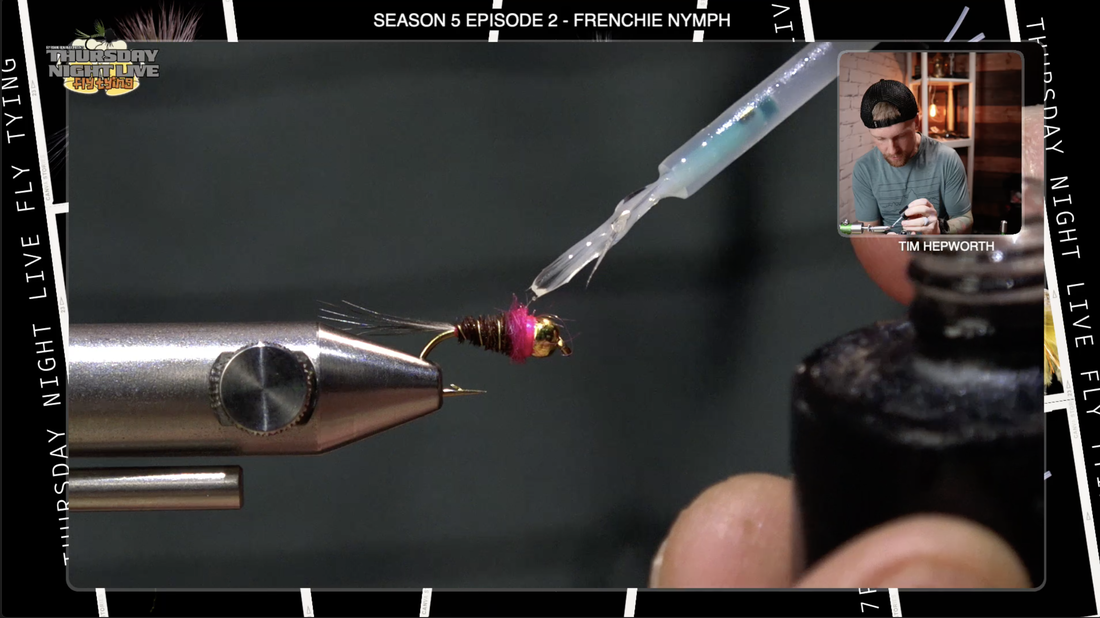
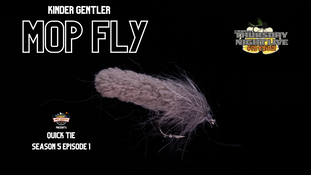
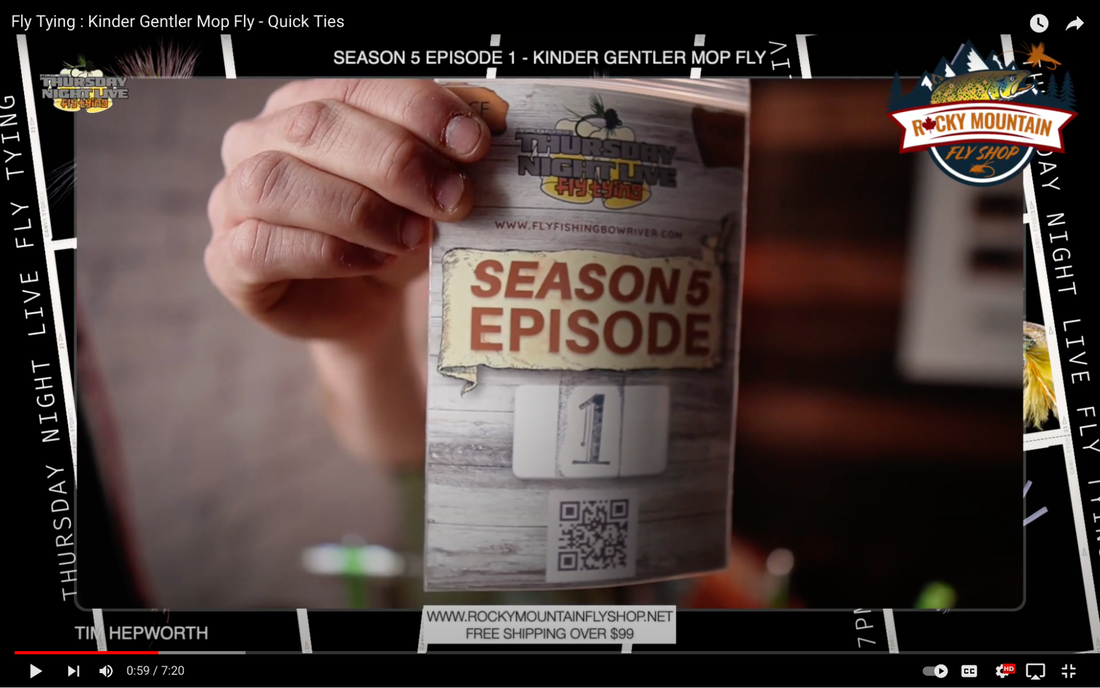
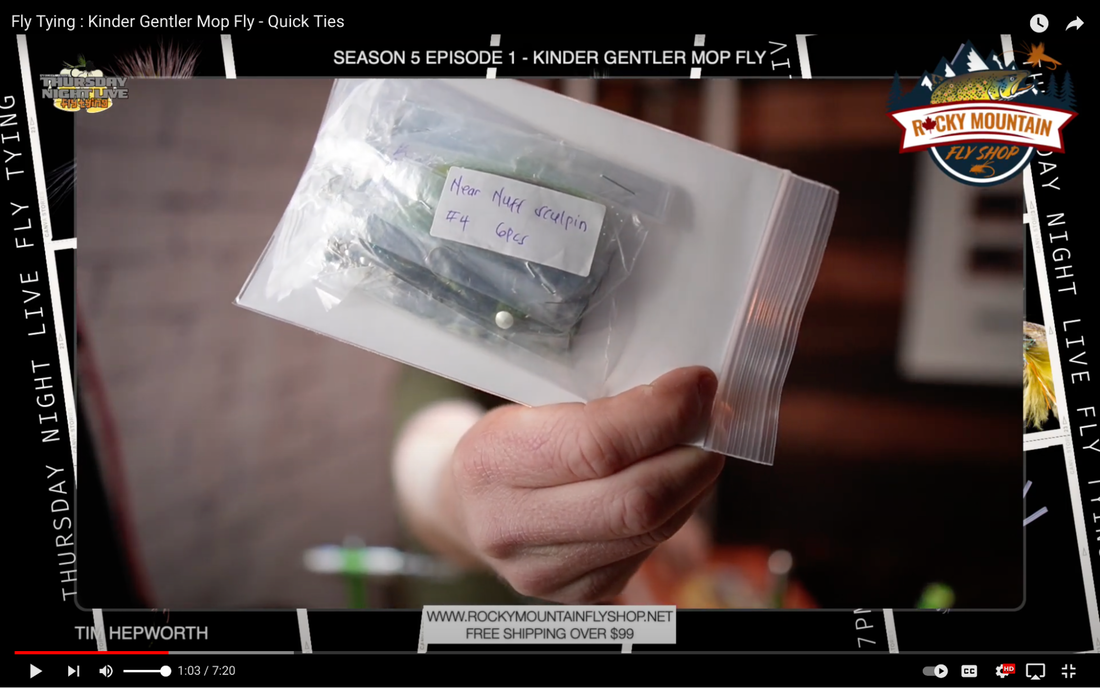
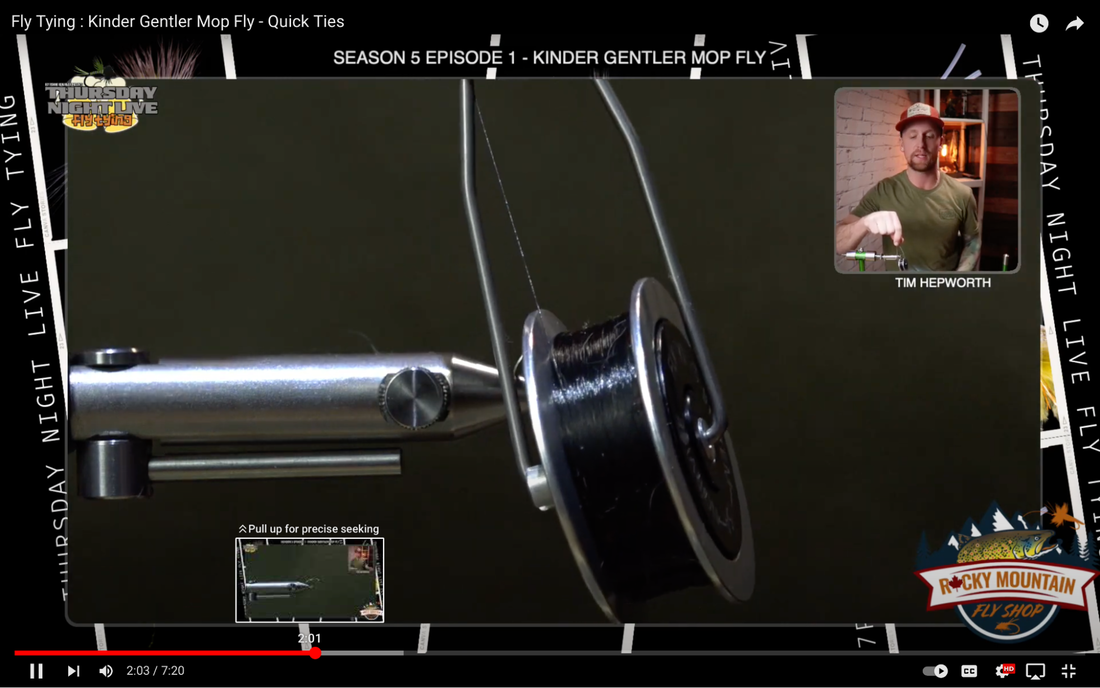
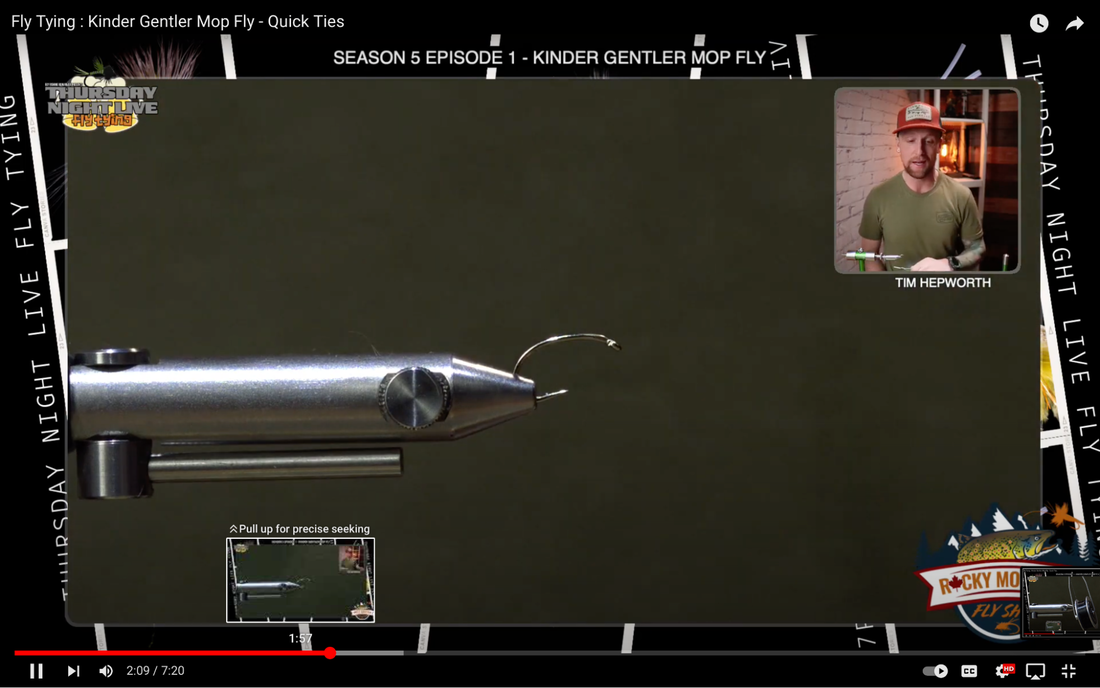
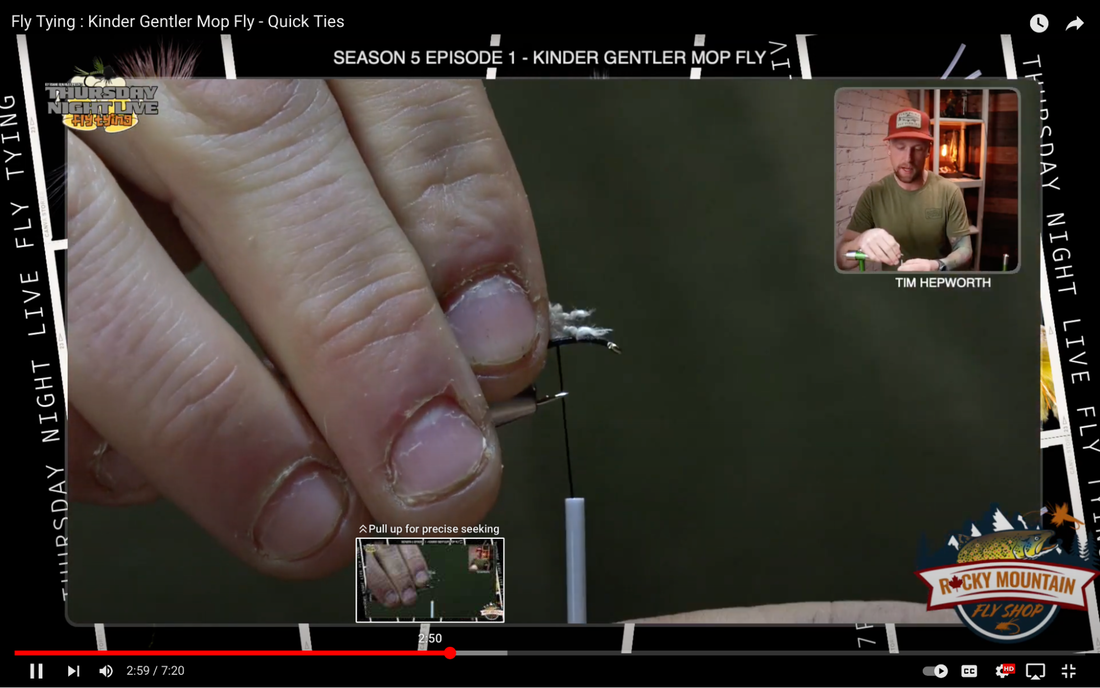
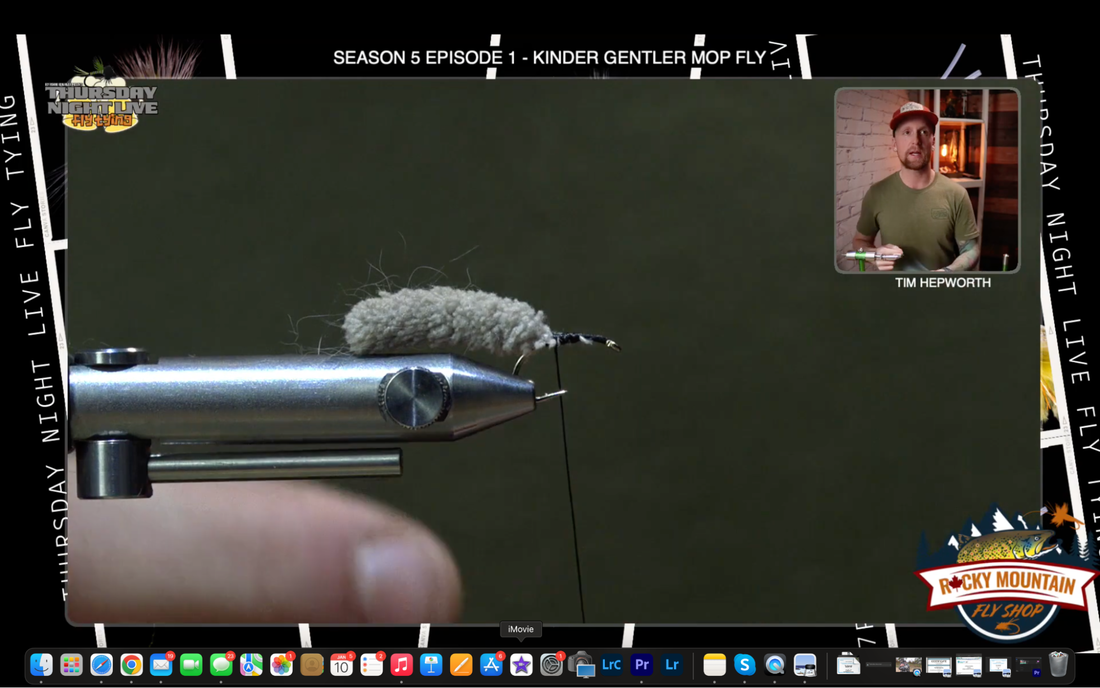
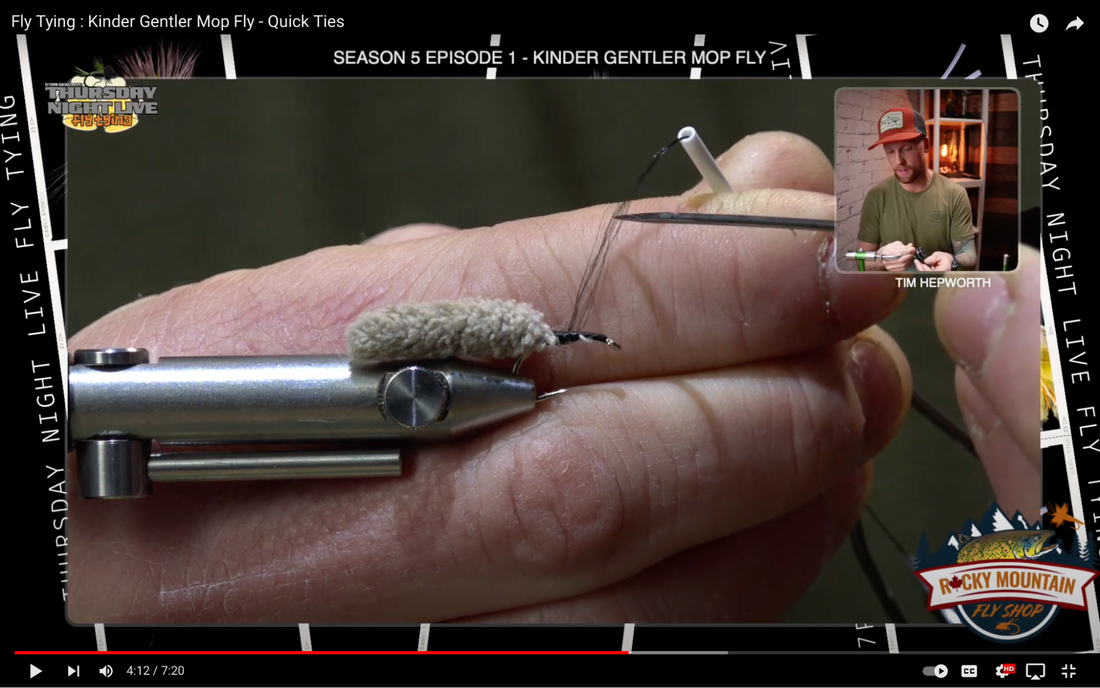
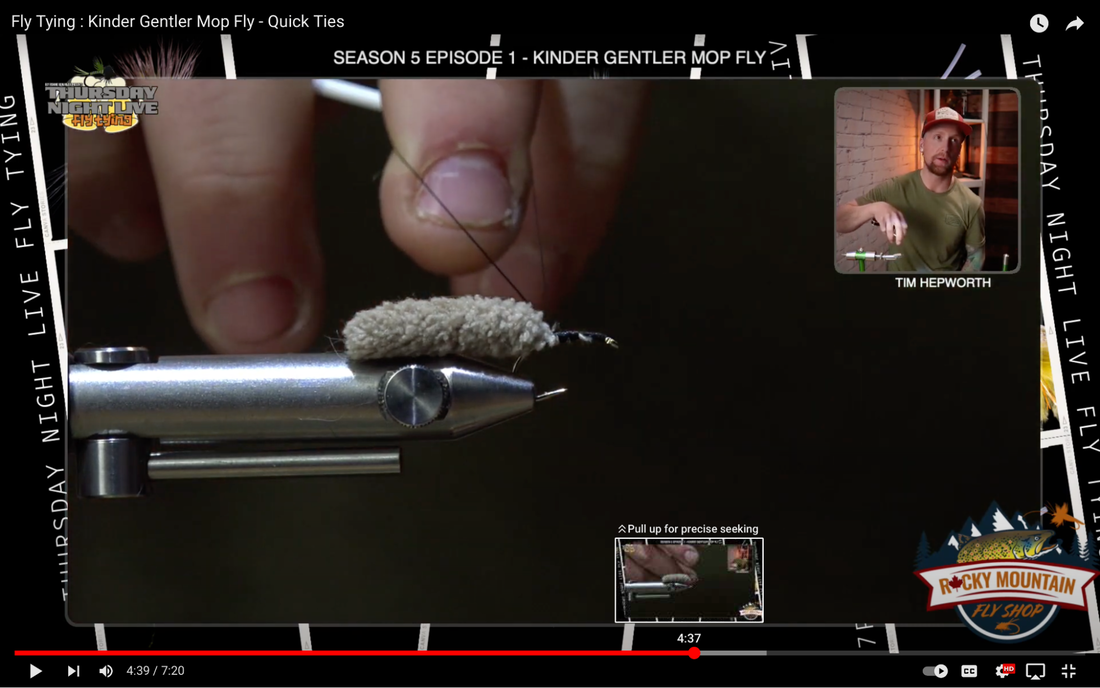
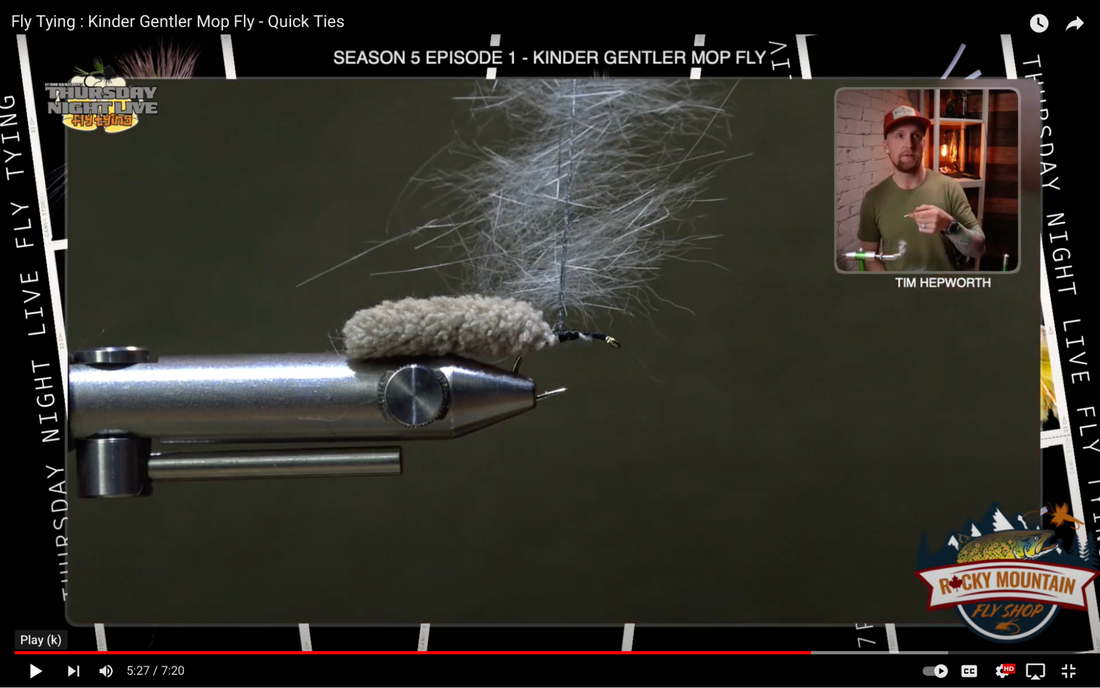
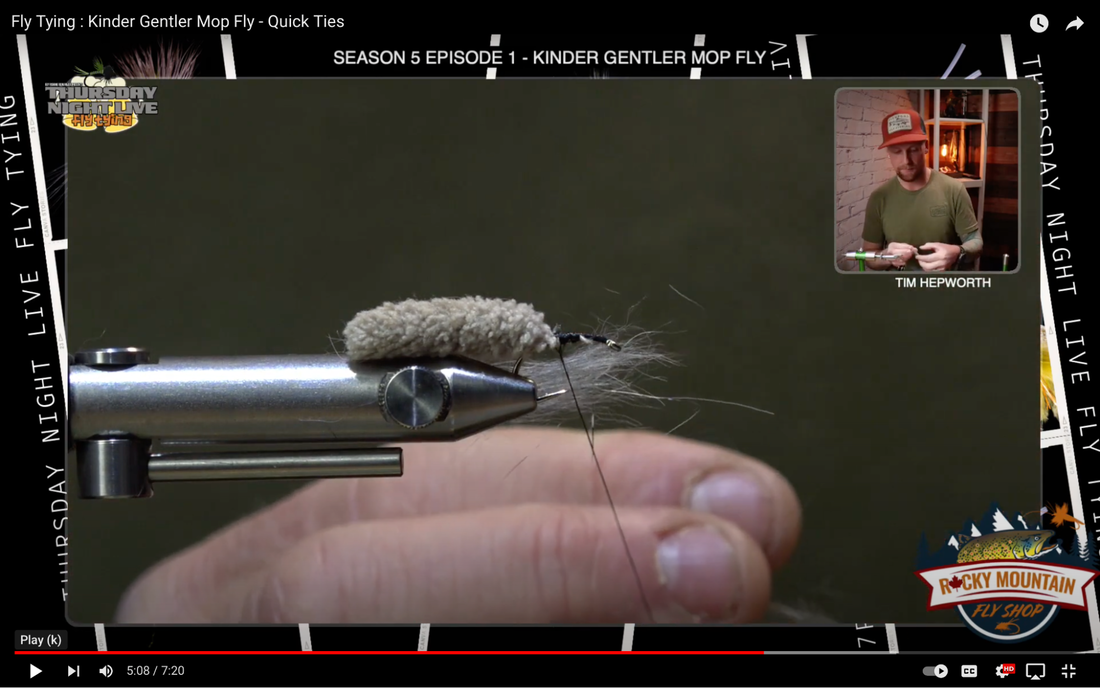
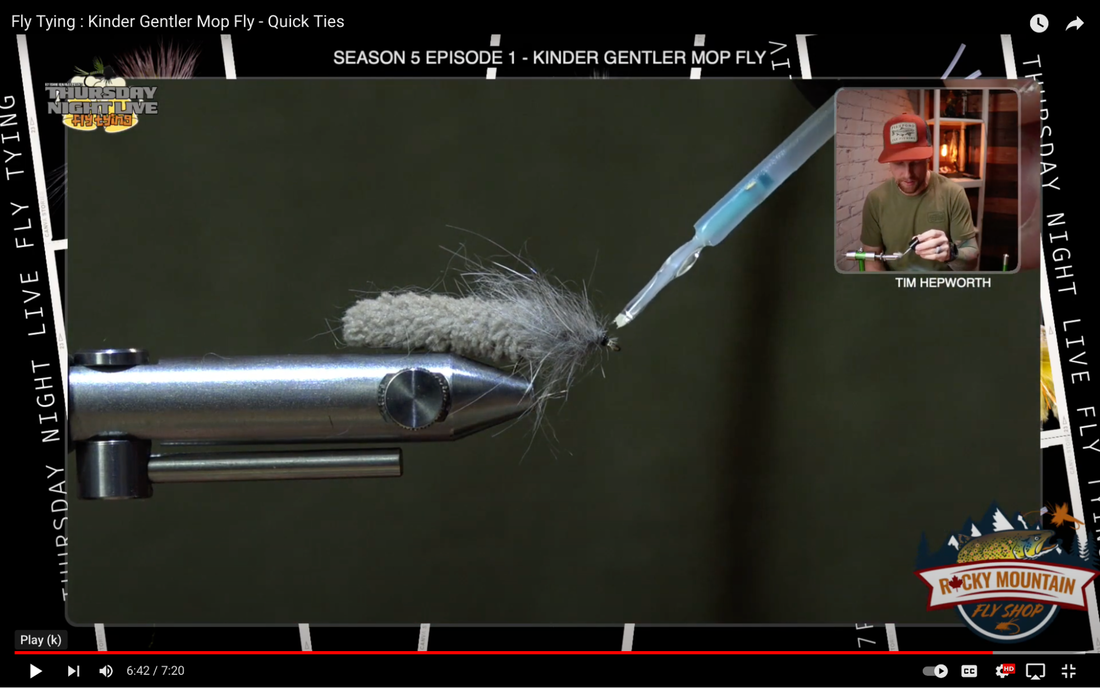
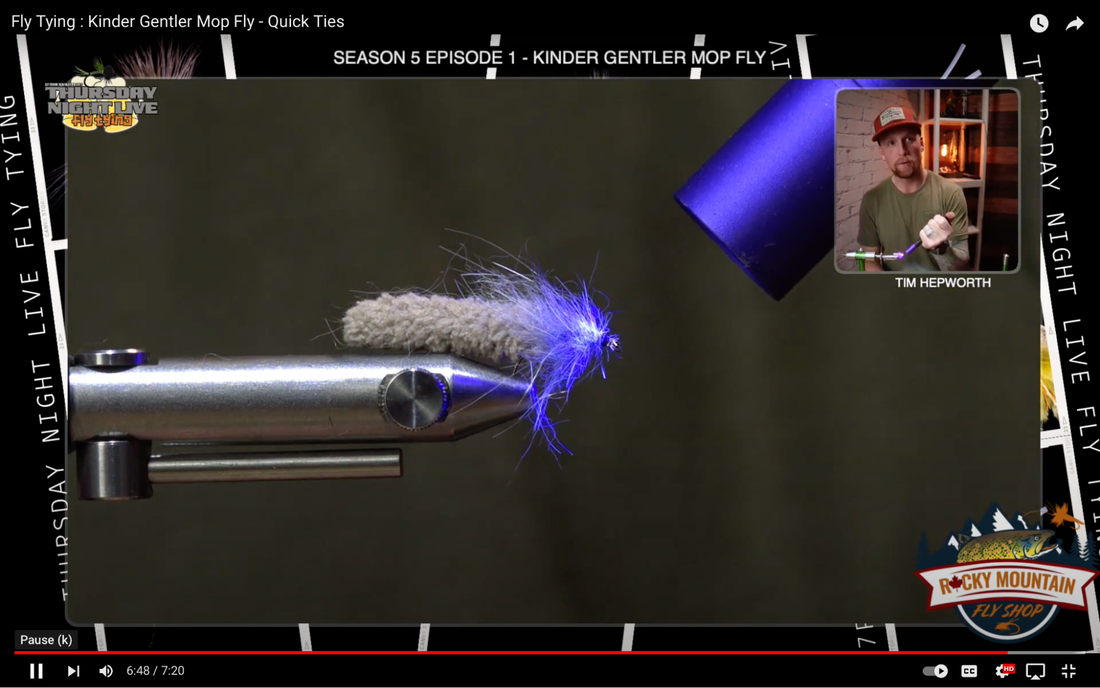
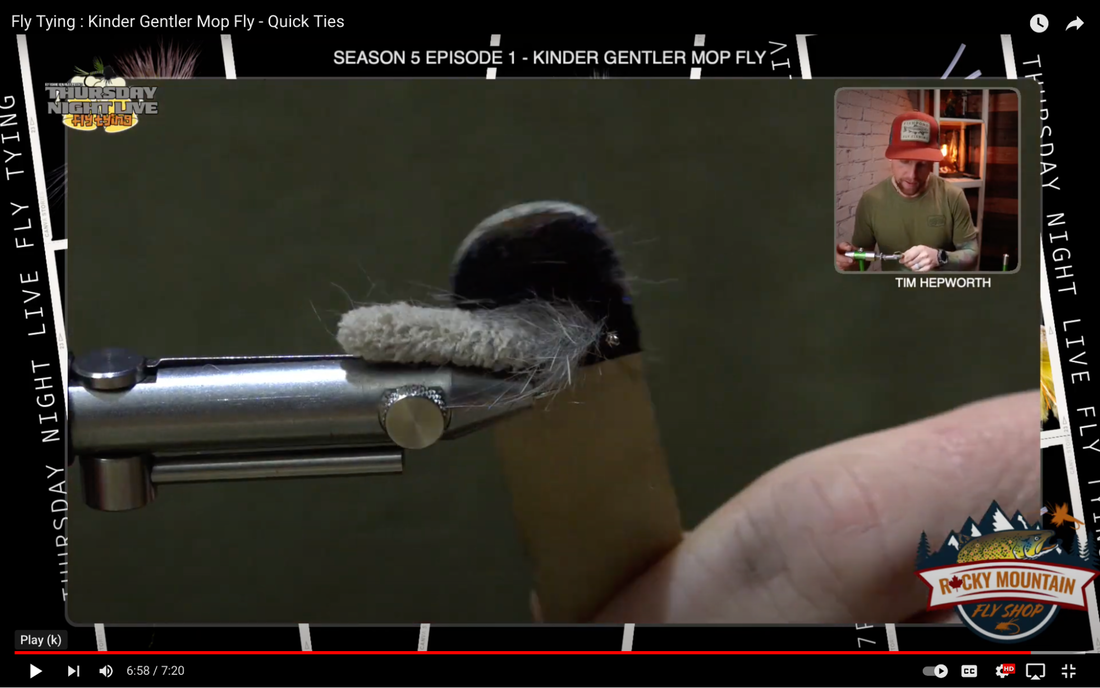

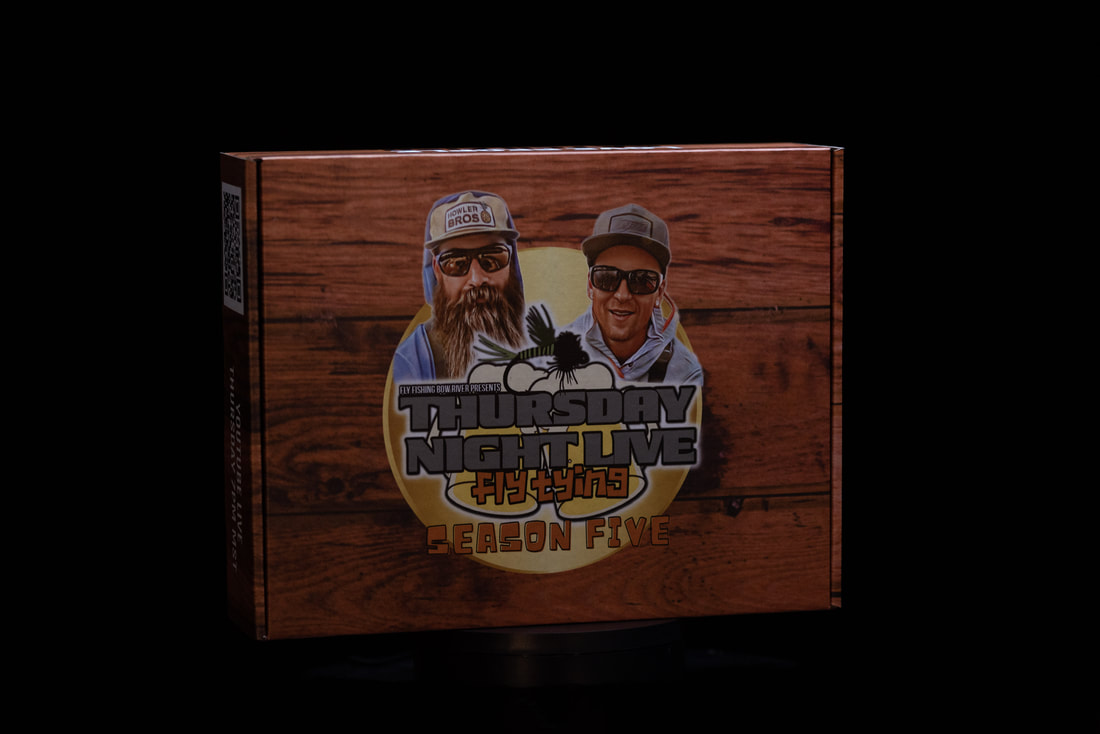
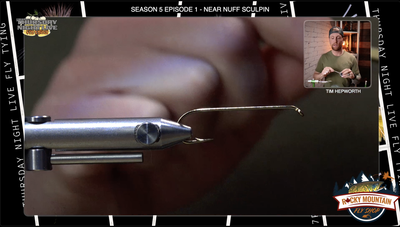
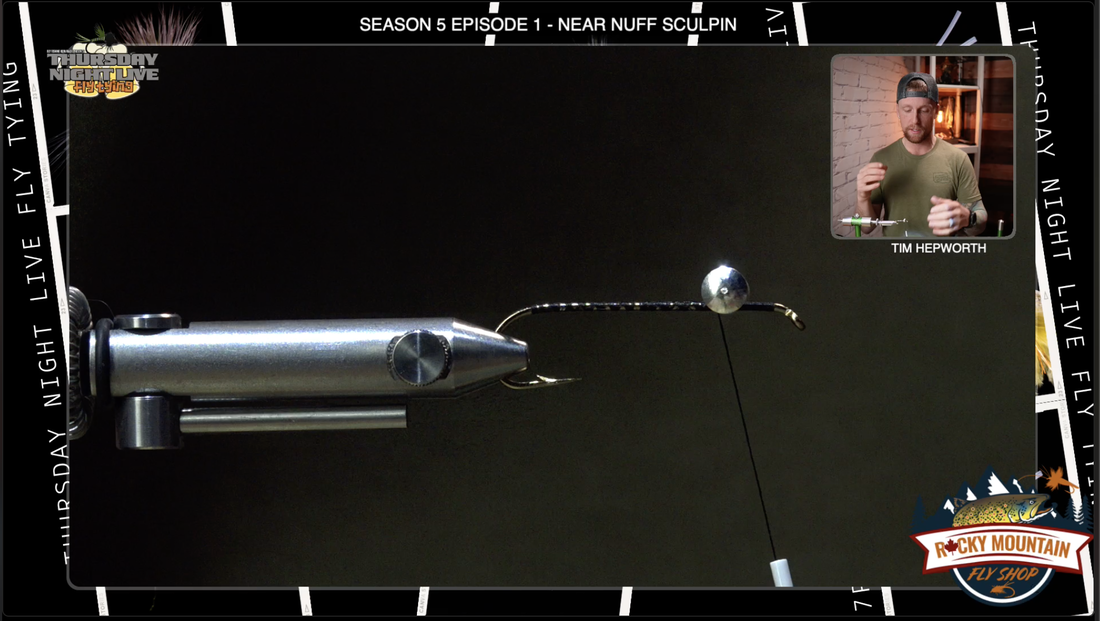
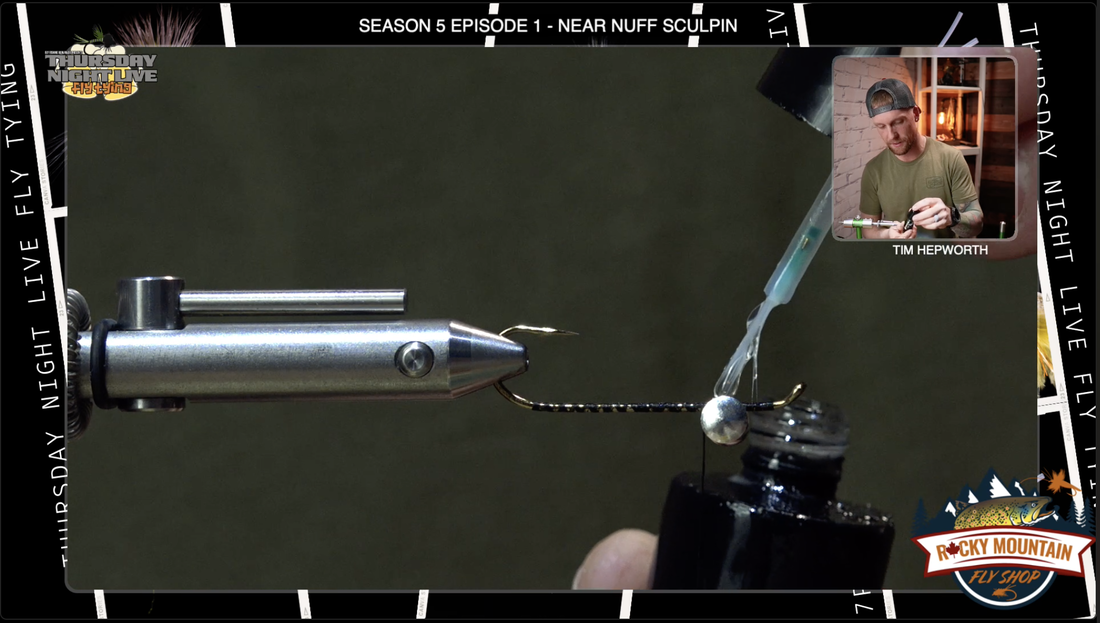
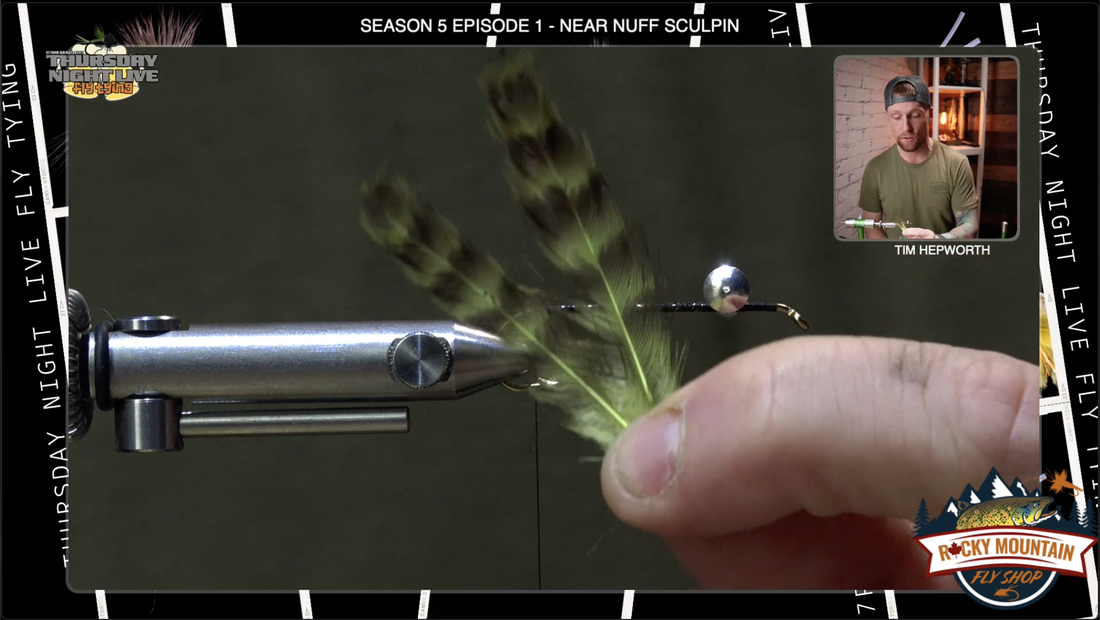
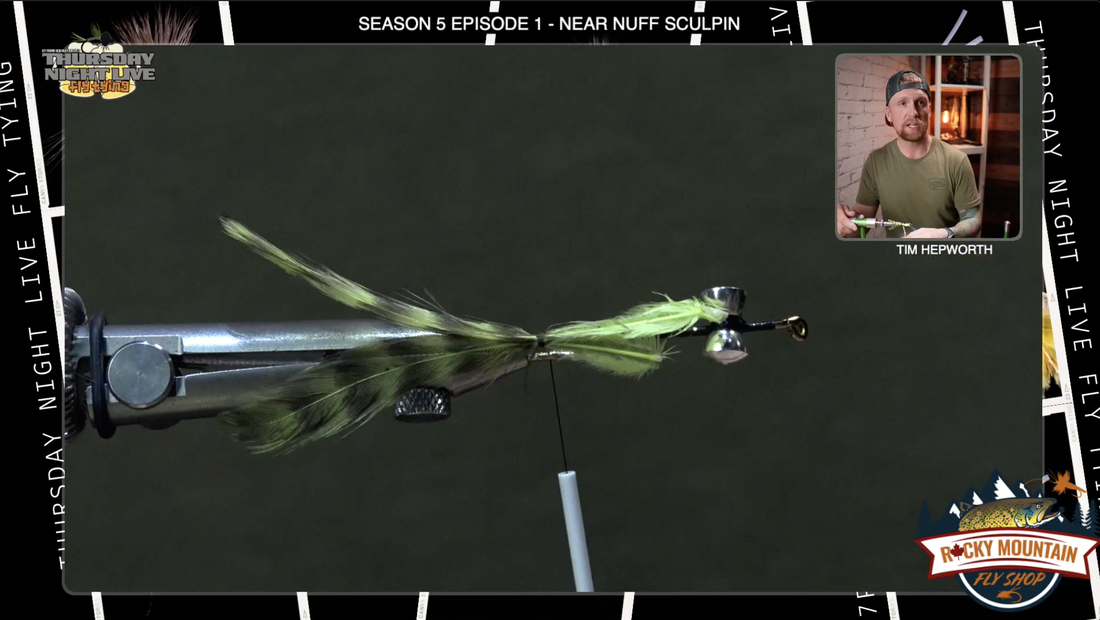
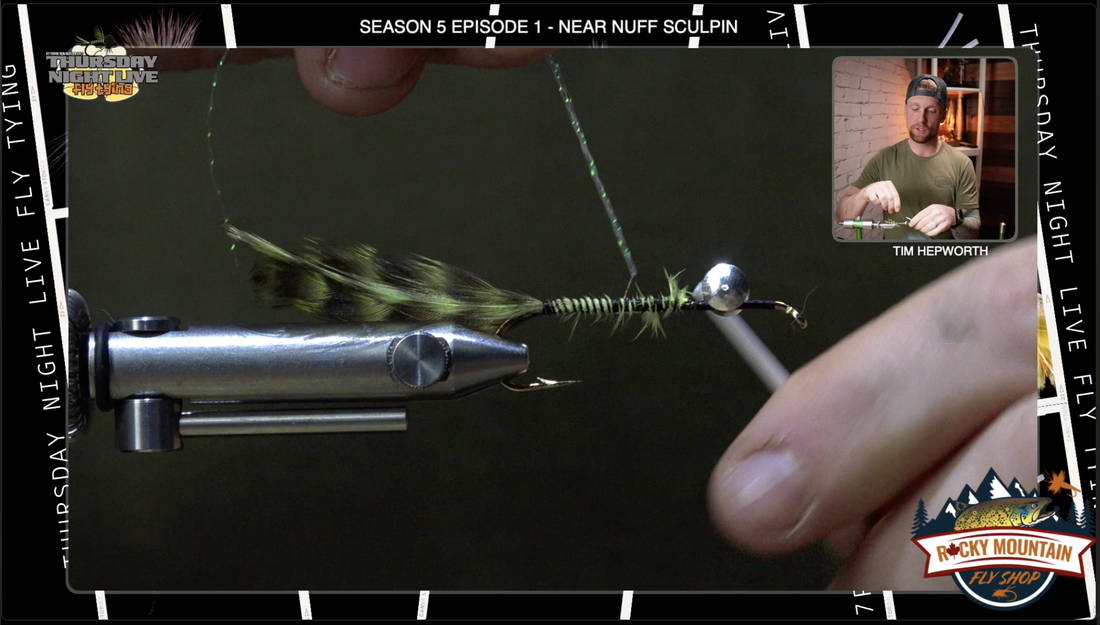
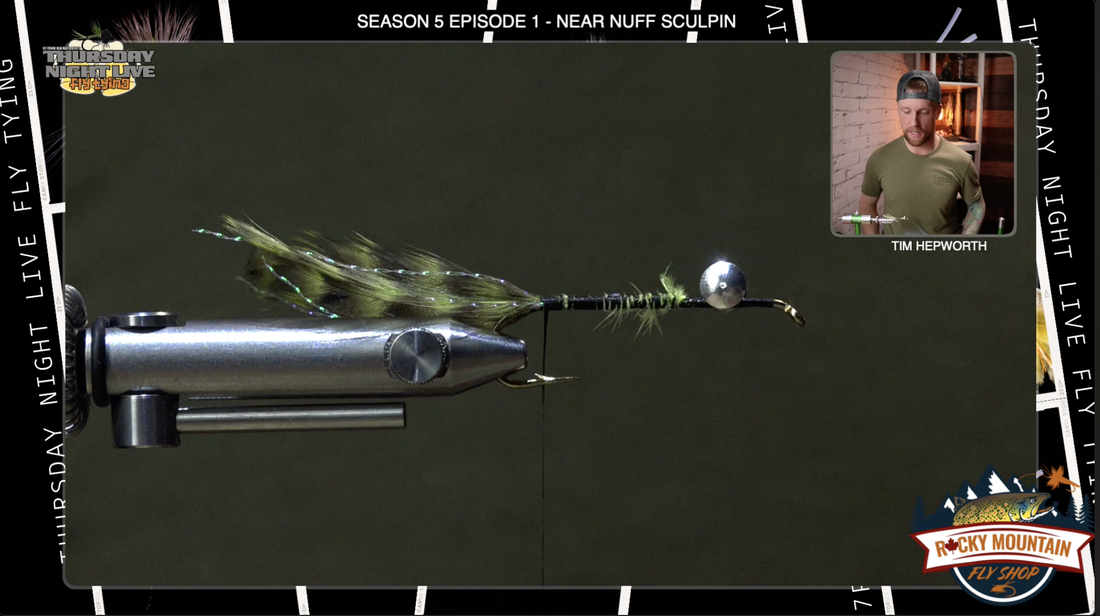
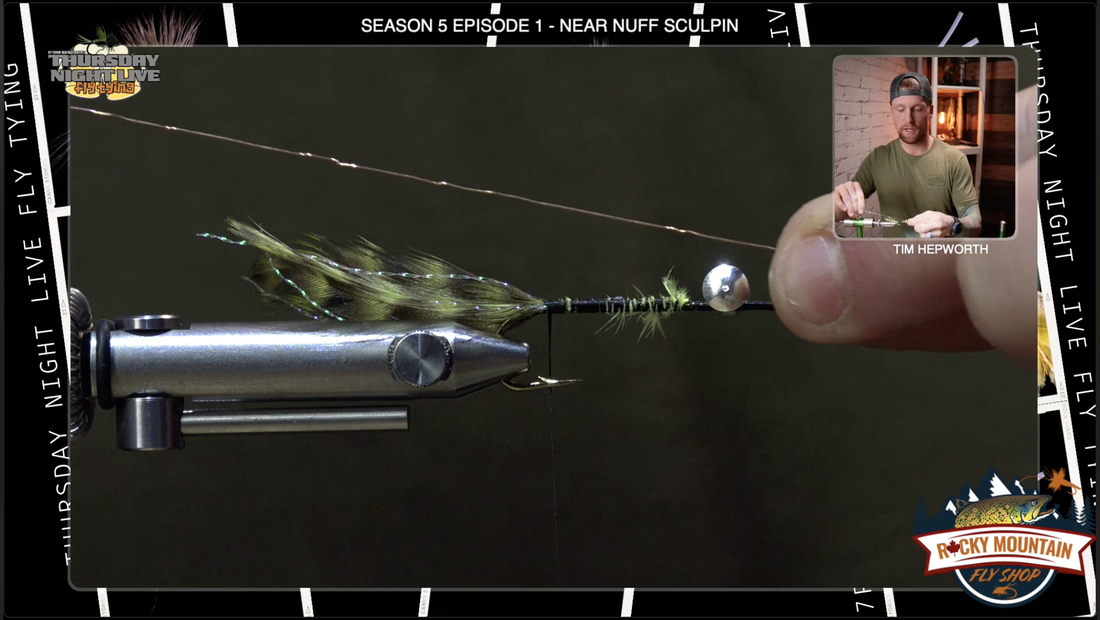
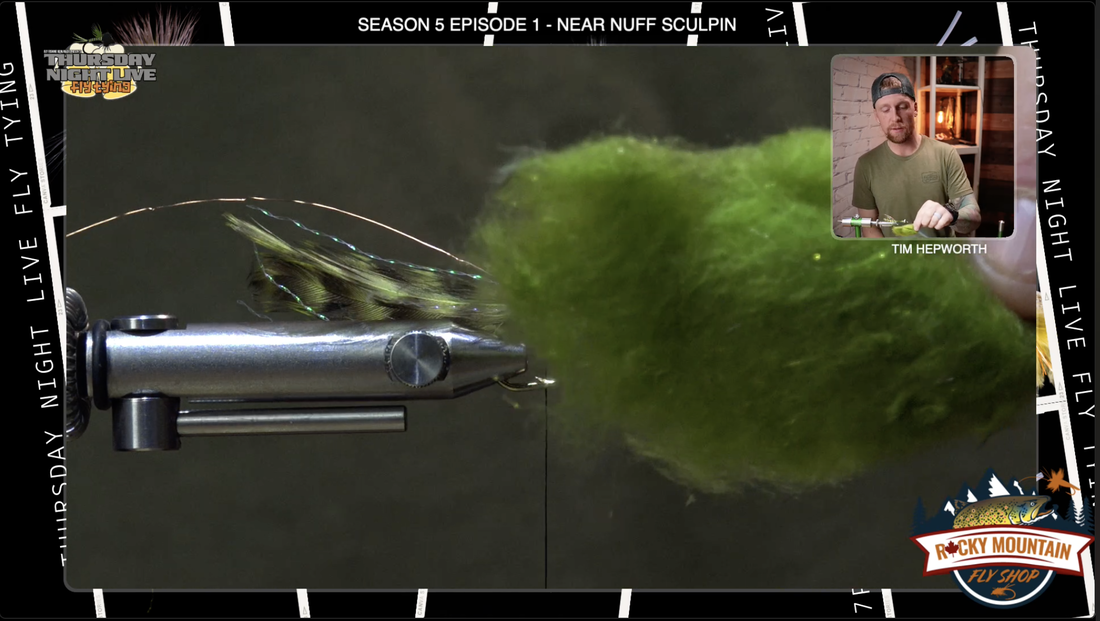
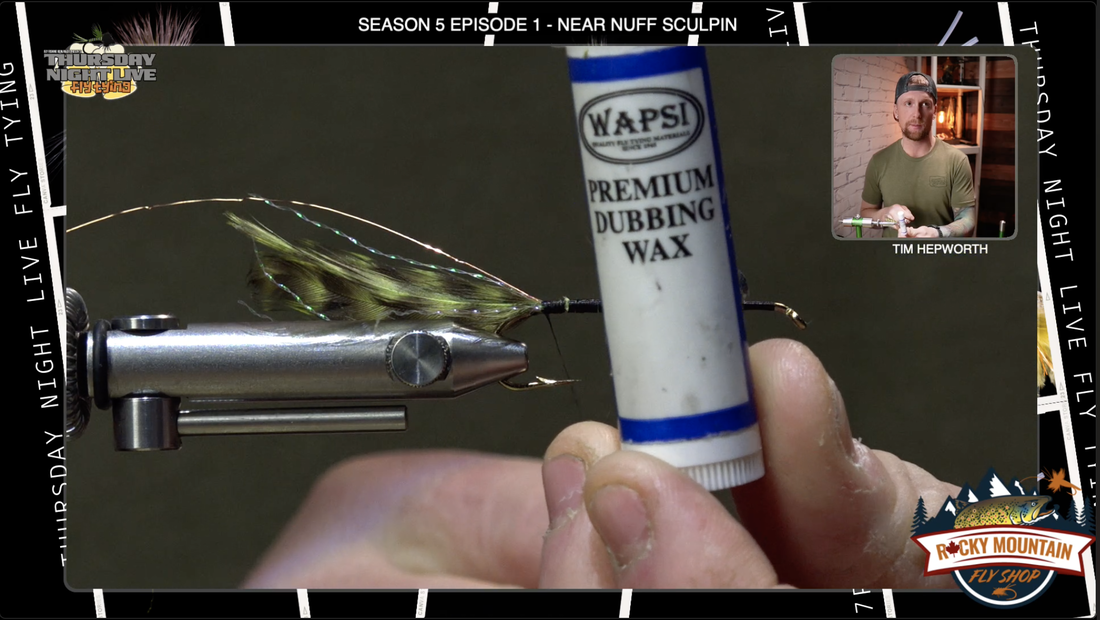
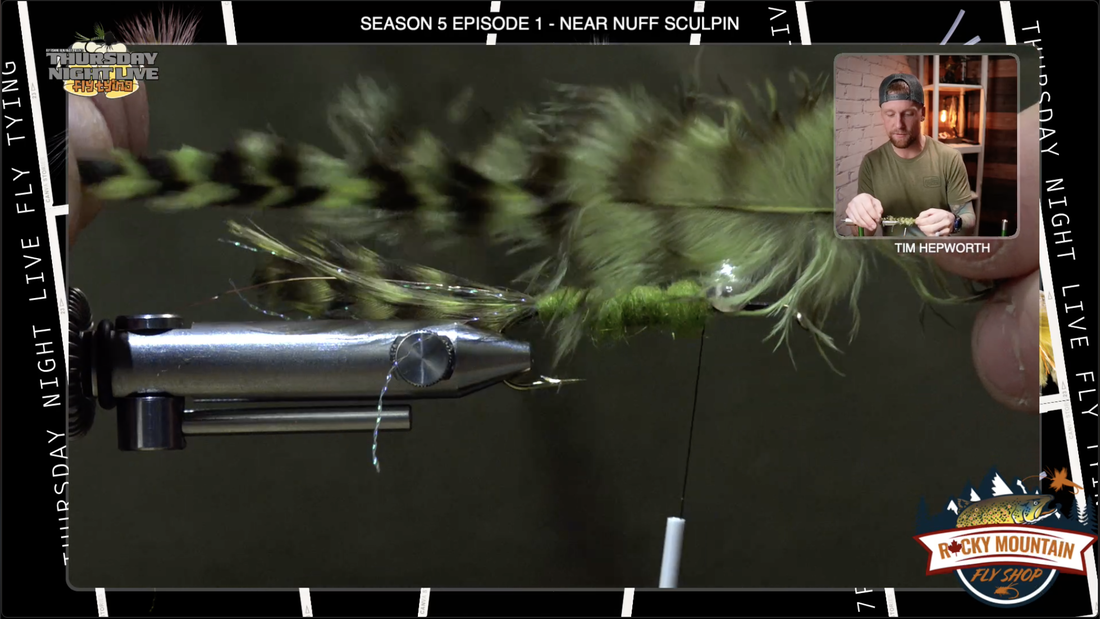
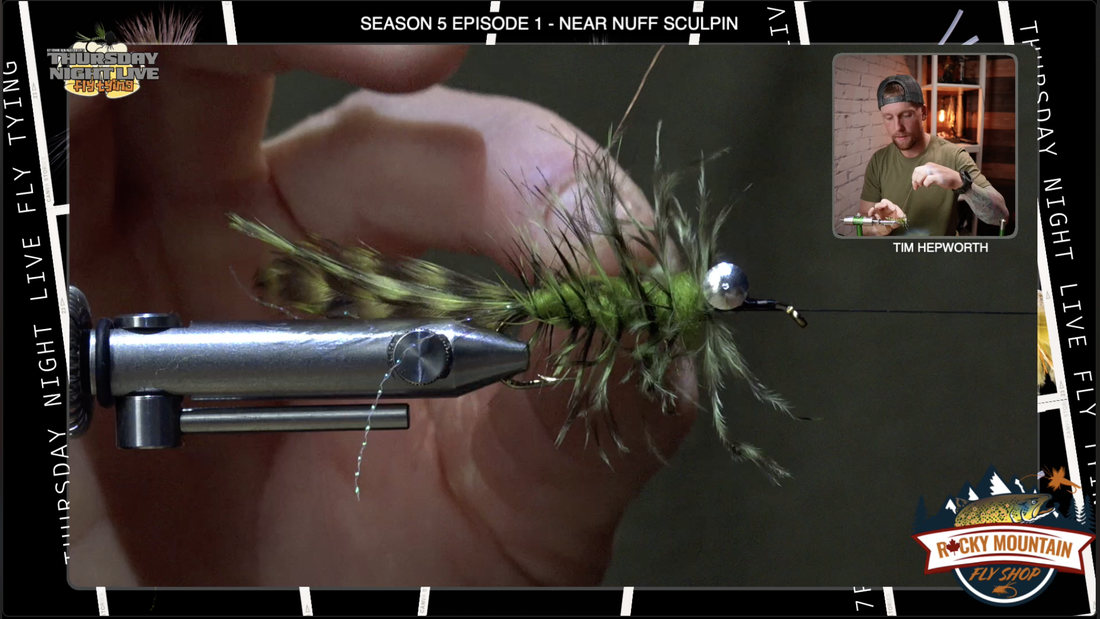
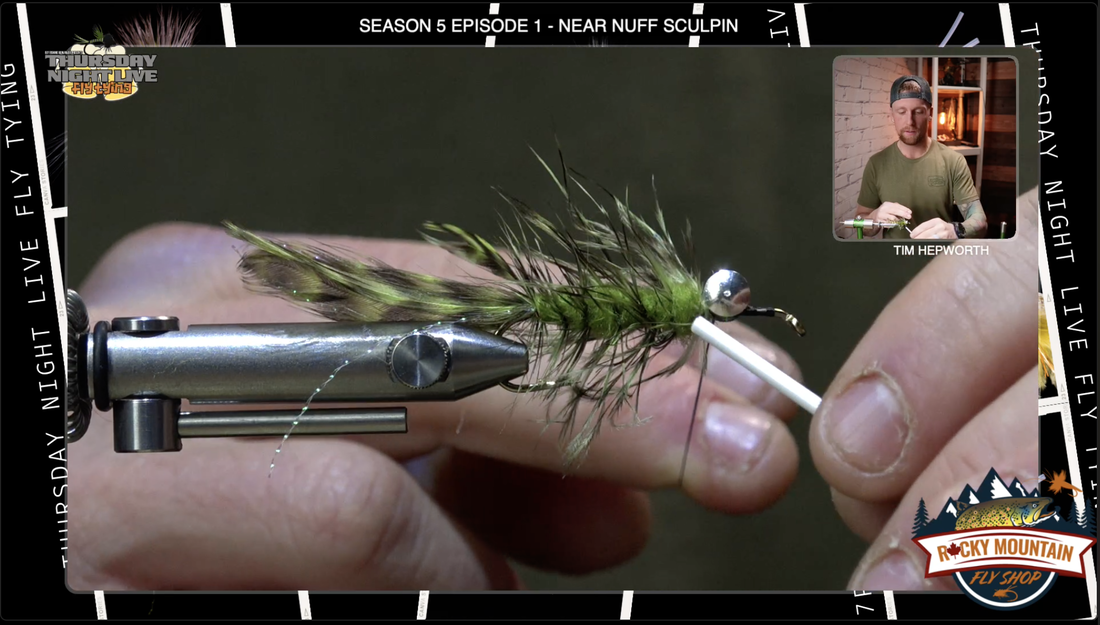
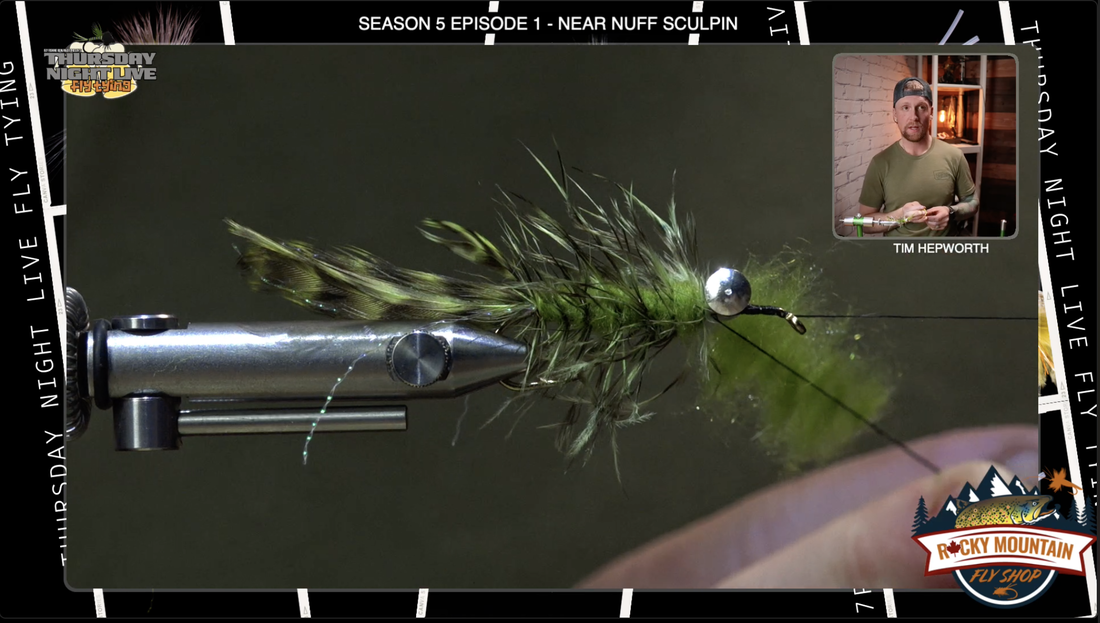
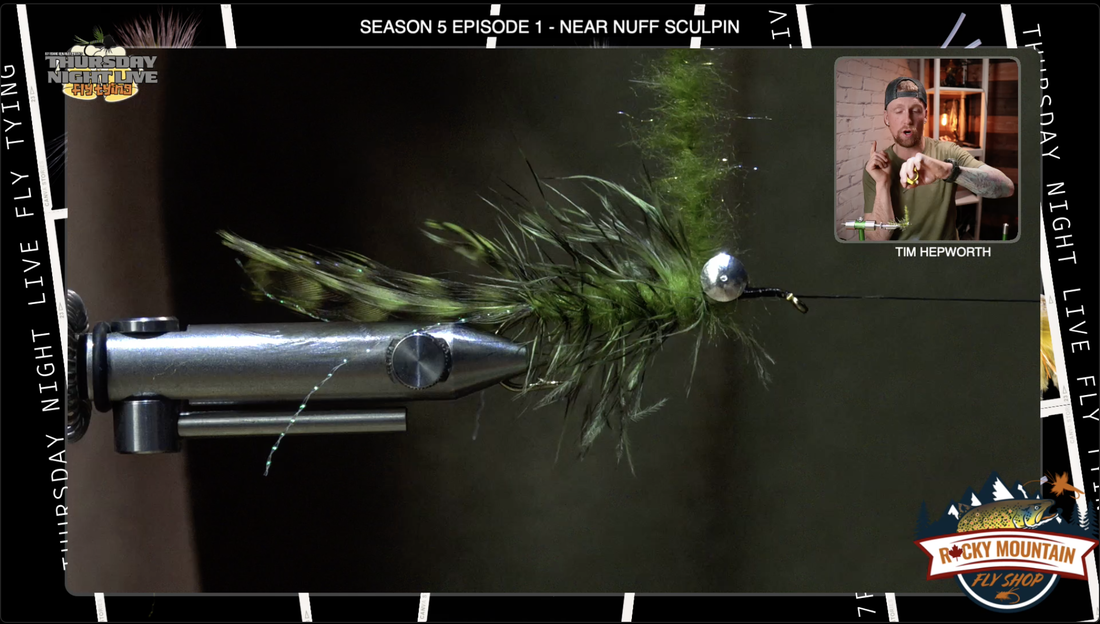
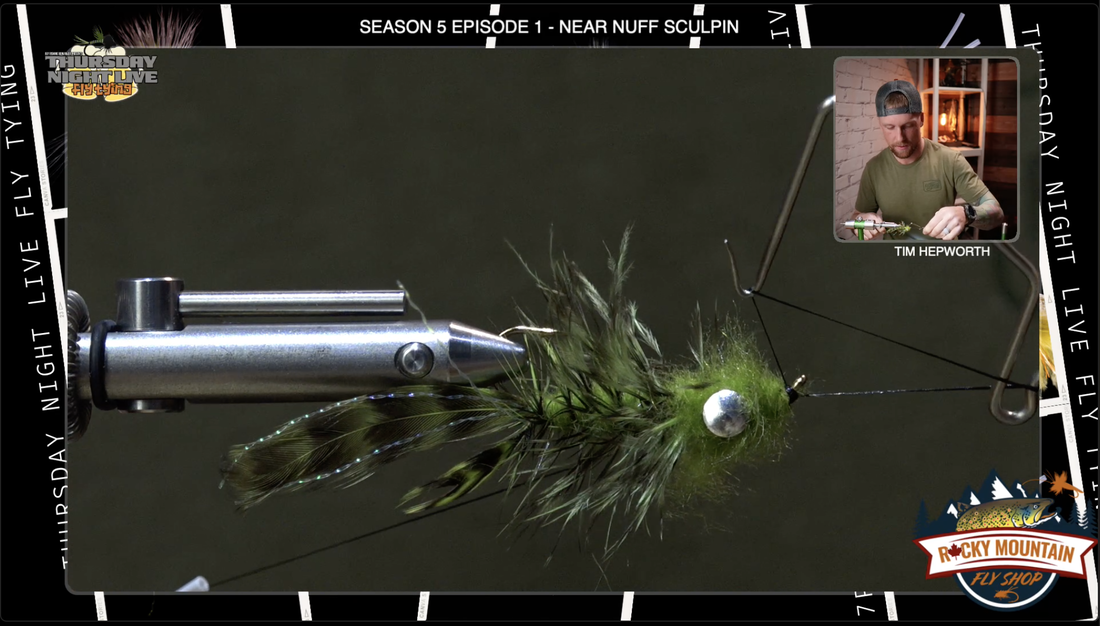
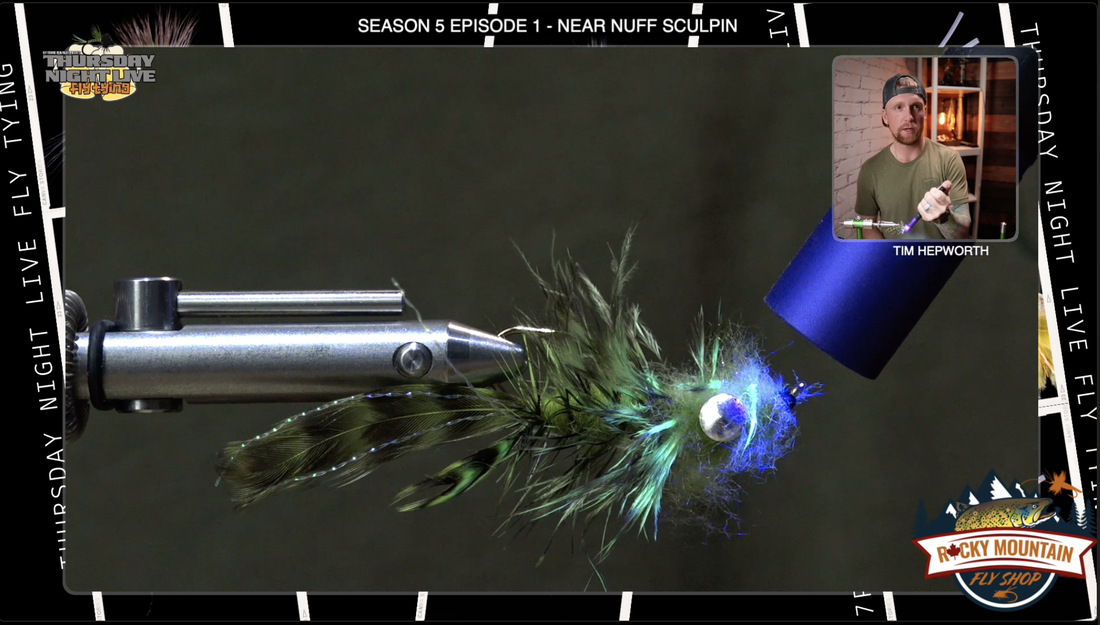
 RSS Feed
RSS Feed